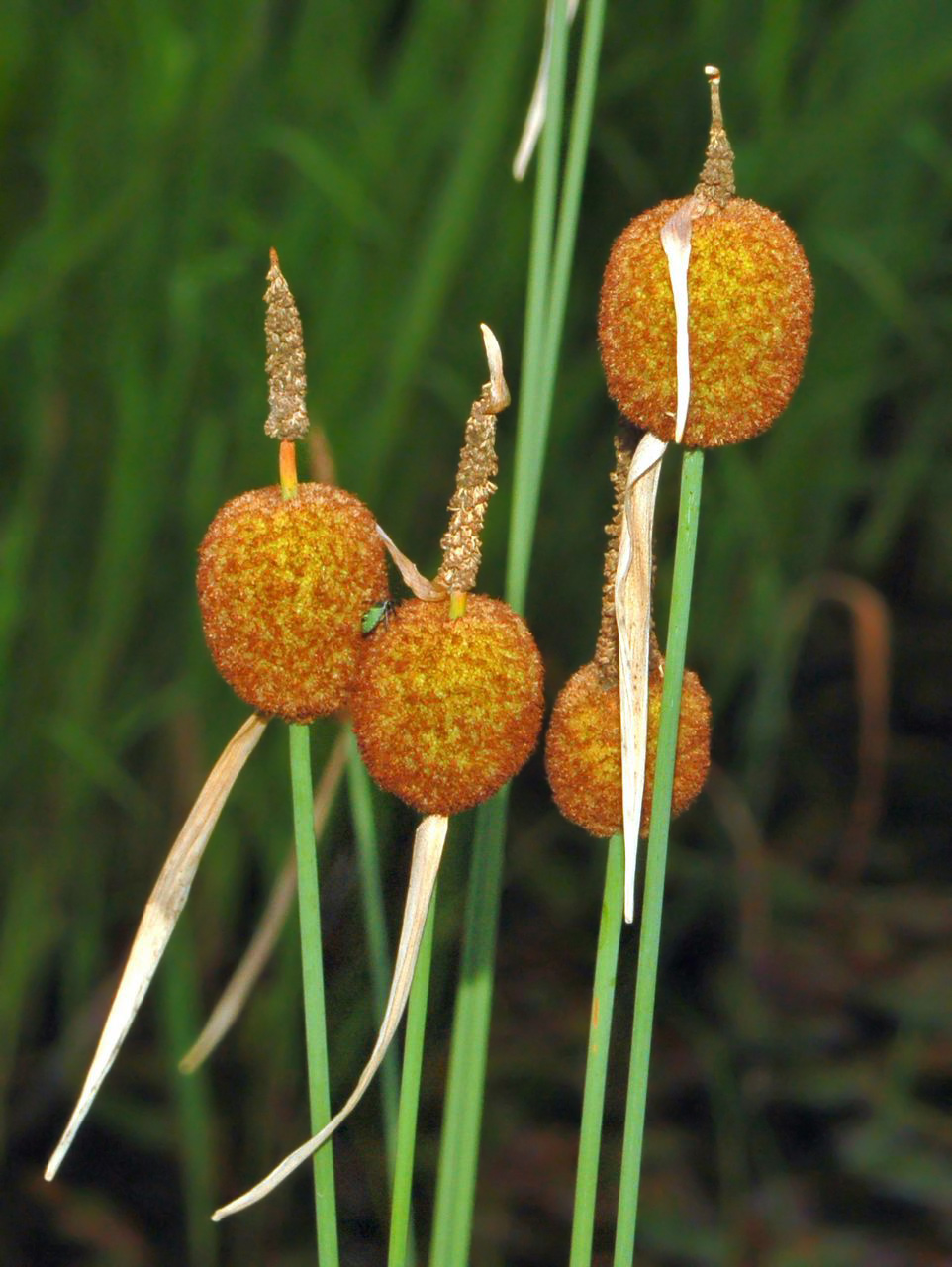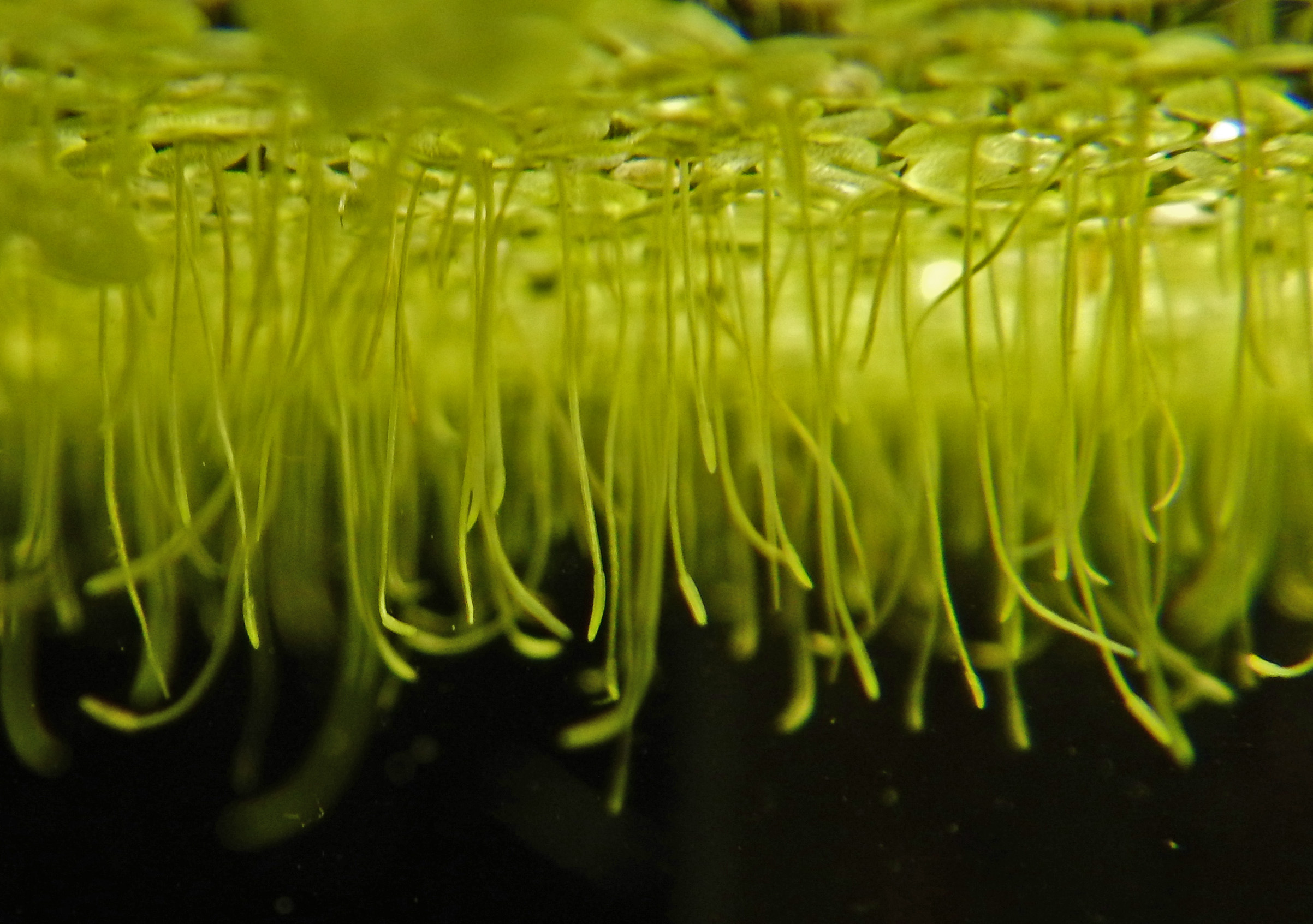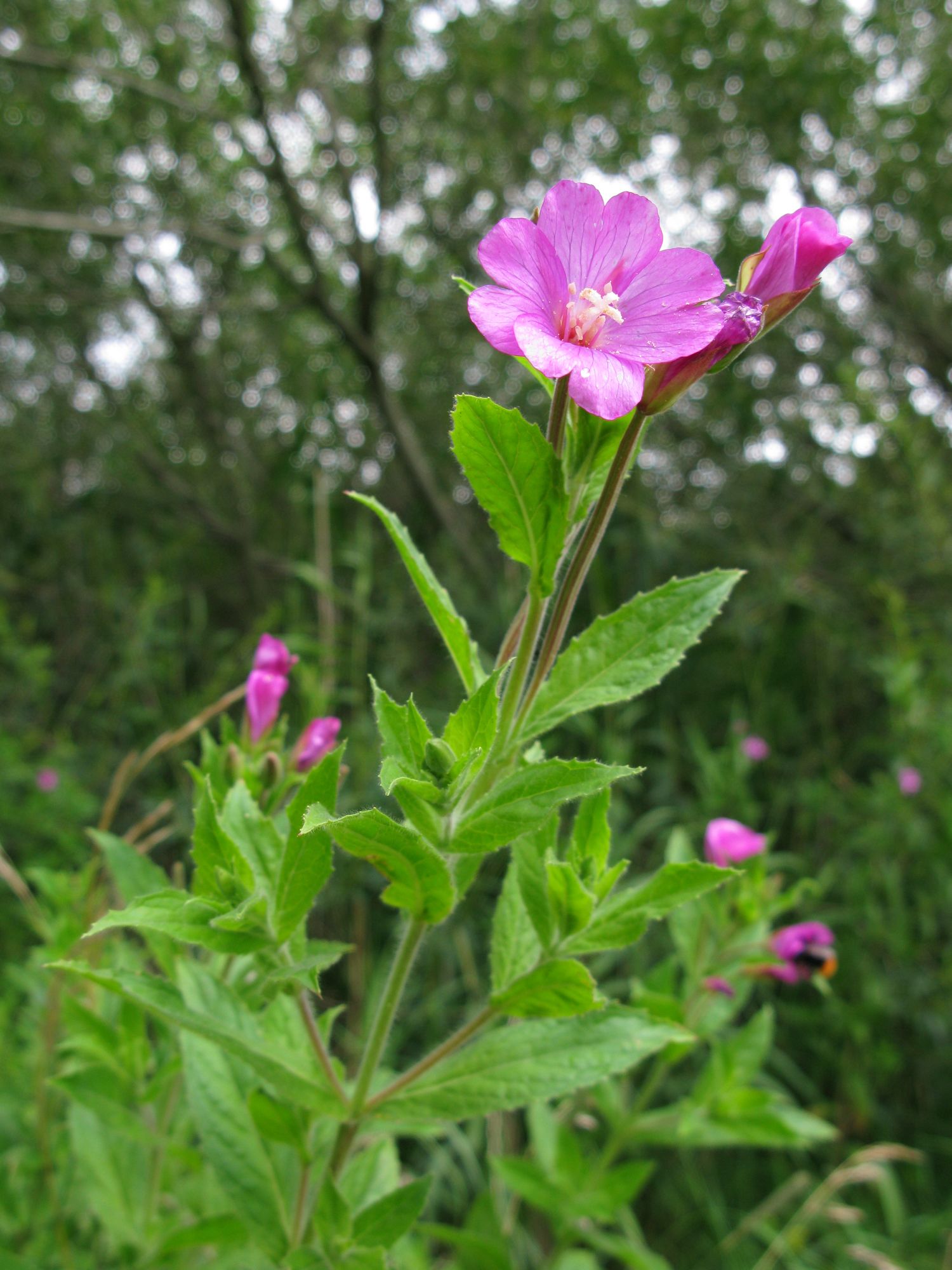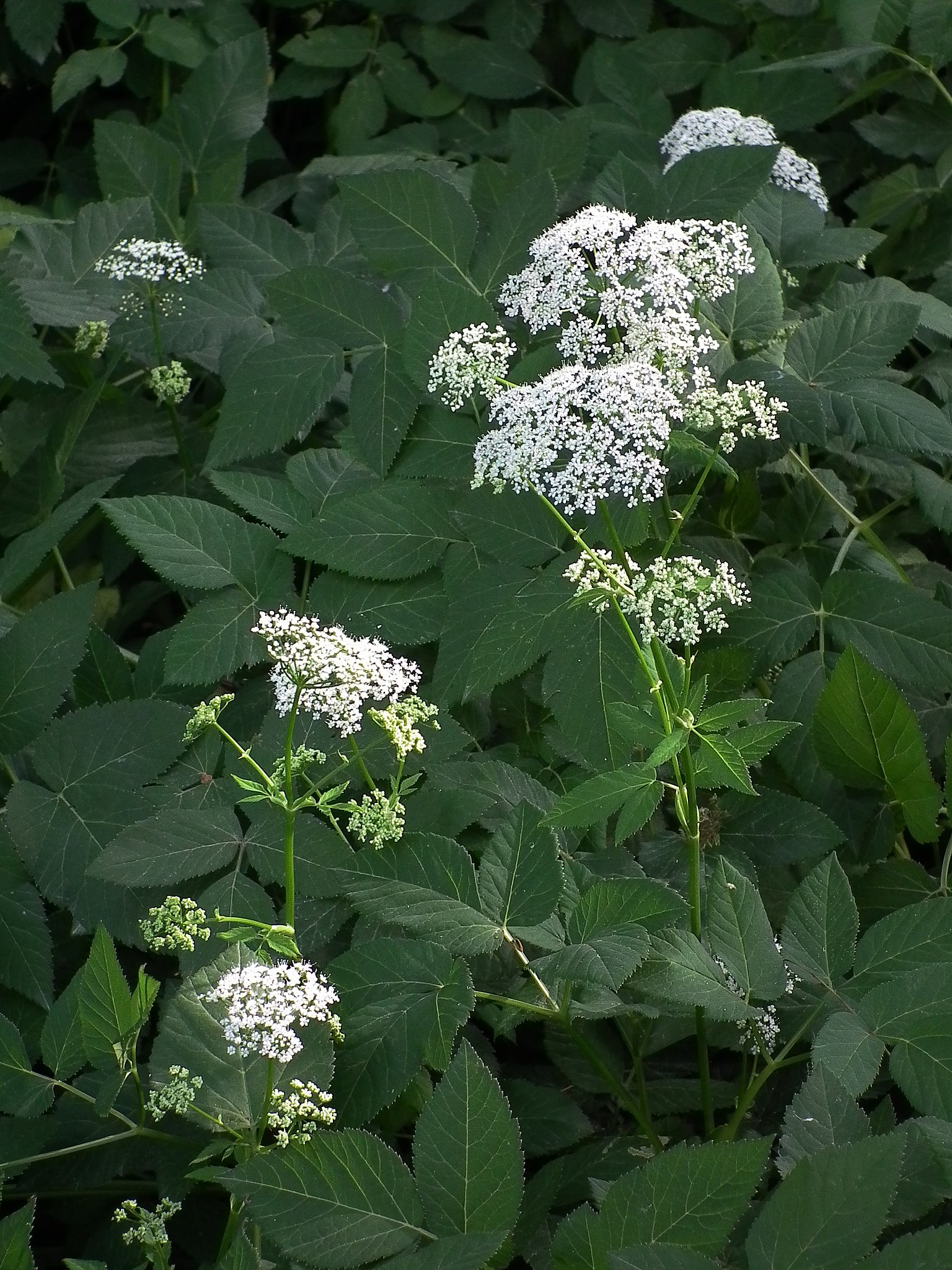Fauna
There are plants that are very dependent on an abiotic environmental factor (e.g. light, humidity, salinity). They only occur where this factor is present. These plant species can be used as indicator plants for this abiotic environmental factor, based on plant species naturally occurring in Luxembourg. It is not easy to distinguish between plants growing in or near nutrient-rich waters and those growing in or near nutrient-poor waters, because many waters in Luxembourg are naturally nutrient-rich (eutrophic). In addition, in the natural course of a watercourse, the nutrient content increases automatically, at the source most waters are cold, oxygenated and nutrient-poor, but the further you go downstream the more nutrient-rich the river becomes.
Where?
The Bog stitchwort (Stellaria alsine) typically grows on wet sites, along spring edges, forest roads and ditches on seepage-wet, more or less nutrient-rich soils in partial shade.
Appearance?
The brook chickweed is a perennial herbaceous plant that reaches growth heights or lengths of 10-40 cm. The leaves are directly on the stem or short stalked, elongated pointed and bluish green color. In the flowering period from May to July it forms small radiating white to light green flowers

"Stellaria alsine kz12" is licensend under CC BY-SA 4.0
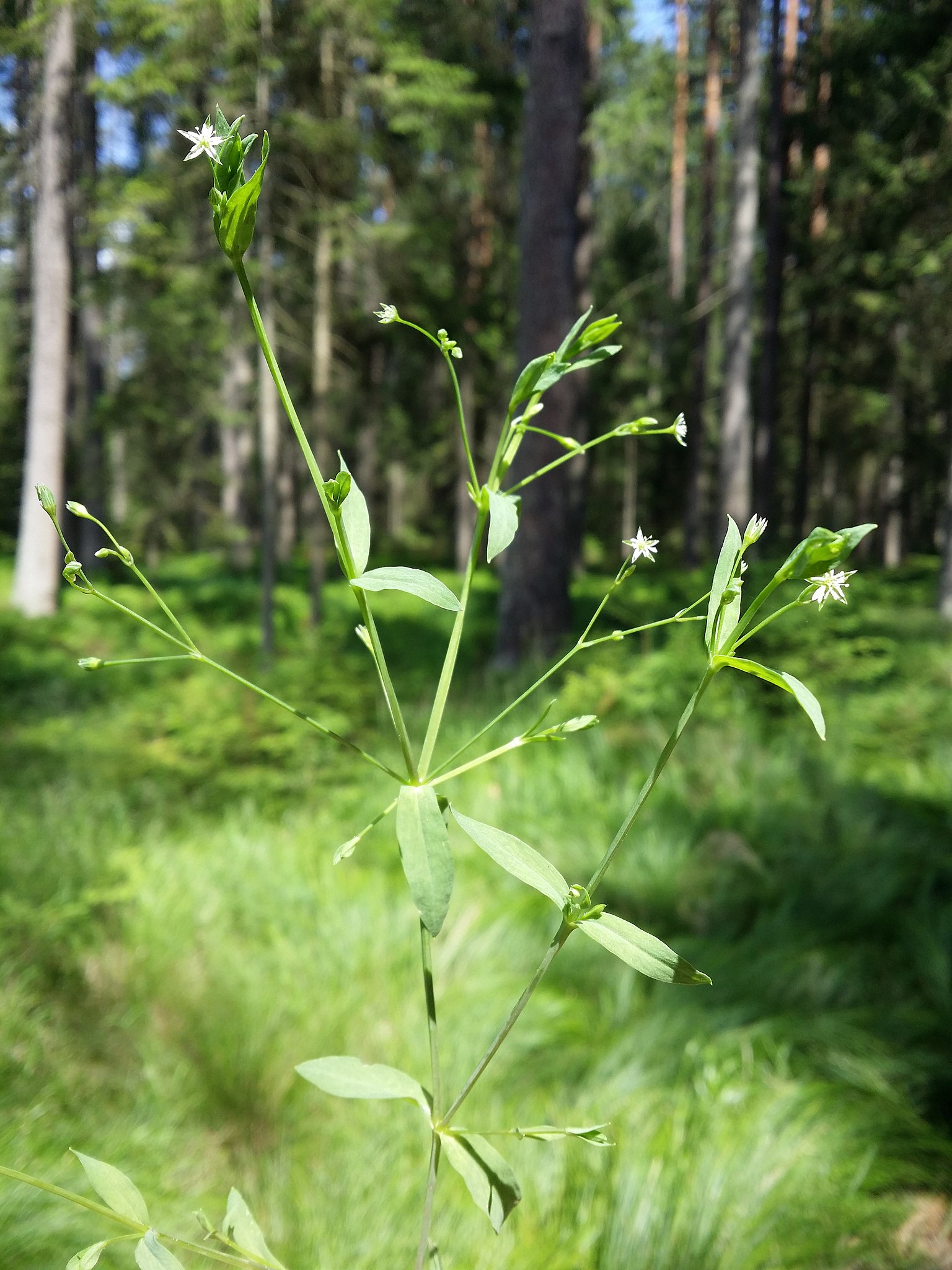
"Stellaria alsine sl17" by Stefan.lefnaer is licensend under CC BY-SA 4.0
Where?
Bogbean (Menyanthes trifoliata) grows in shallow water and spring swamps of rivers, in fen forests, intermountain fens, and on edges of upland bogs.
Appearance?
Bogbean is a perennial, herbaceous plant that grows up to 30 cm tall and forms rhizomes up to finger-thick, from which 12 to 20 cm long leaf stalks grow, each with three elliptical, smooth leaves. From April to June, inflorescences form on the leaf axils on up to 30 cm long, leafless shafts, with, per flower, five pink to pure white sepals.
Special Features?
Bogbean has been used as a remedy and is said to help with digestive problems. However, the originally assumed fever-reducing effect cannot be proven. They can cause headaches, vomiting and diarrhea.

"MenyanthesTrifoliata6" by Christian Fischer is licensed under CC BY-SA 3.0

Where?
Bur-reed (Sparganium) are a plant genus of the bulrush family and occur in about 21 different species. They grow on damp to wet, temporarily or always flooded sites on water banks, swamps and bogs. Due to their (under suitable conditions) very dense stands, they form so-called reed beds.They often occur together with cattails, sedges and rush species.
Appearance?
Bur-reed species are green overwintering perennial herbaceous plants, some of which grow completely underwater or with floating leaves and inflorescences at or above the water surface. The alternate deciduous leaves are oblong, grass-like in shape, and consist of a spongy floating tissue. The inflorescence consists of male and female spherical partial inflorescences that grow as white to dark green, spiny-looking flower heads.
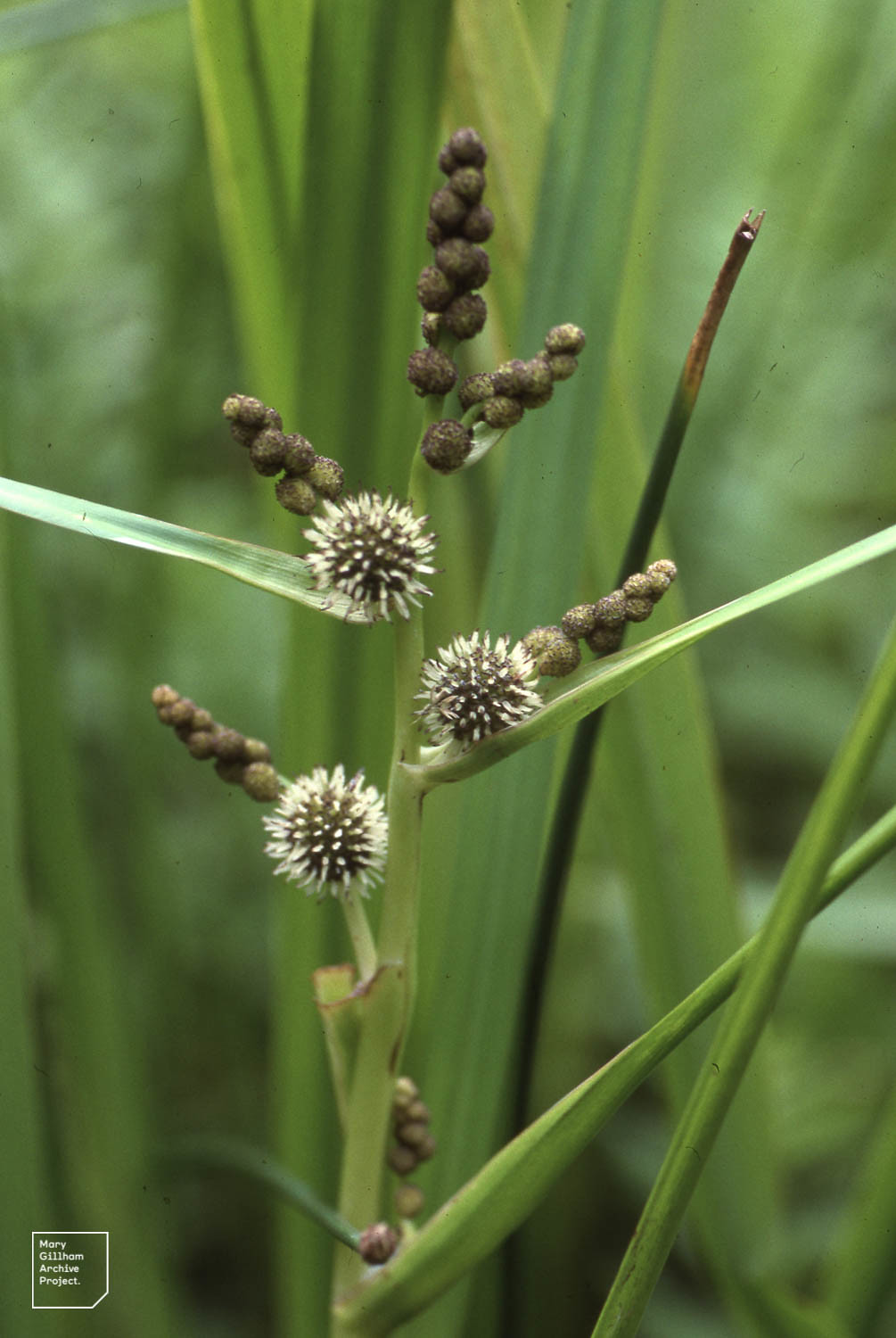
"Sparganium erectum. Forest Farm Pond. 1990" by Dr Mary Gillham Archive Project is licensed under CC BY 2.0

"Sparganium fluctuans (floating bur-reed), Abbey Pond, Ripton, VT" by Doug McGrady is licensed under CC BY 2.0
Where?
Butterbur requires seepage-wet or partially flooded, nutrient-rich soils and therefore often grows along stream and river banks.
Appearance?
Butterbur is a perennial herbaceous plant that reaches growth heights between 10 and 40 cm, and up to 120 cm at fruiting time. It grows from a brownish rhizome about 4 cm thick. The leaf stalk growing from it is hollow inside and shows distinct ridges and can reach diameters of up to 60 cm, growing only after the flowering period. The flowers grow on a separate, reddish stem, appear between March and May and grow as a densely standing reddish-white to red-purple inflorescence.
Special features?
The plant was and is used as a medicinal plant after controlled processing, but is toxic to humans in its natural state.

"Petasites hybridus - butterbur - Gewöhnliche Pestwurz" by Nichlas Turland is licensed under CC BY-NC-ND 2.0

"Petasites hybridus" by Andreas Rockstein is licensed under CC BY-SA 2.0
Where?
Cattails are an typical aquatic and marsh plant that can develop very dense stands in wetlands. They usually settle on the banks of water bodies, in marshes and swamps on moist to wet sites.
Appearance?
Are deciduous perennial plants that have alternate leaves on stems that are always hairless. The leaves grow stiffly erect and can reach a length of up to 4 meters. They are grass-like in shape and consist of a spongy compressible webbing. The leaf blades are curved outward to form a semicircular cross-section. The total inflorescence consists of a thicker (all-female) and an above all-male subinflorescence. The inflorescences are cylindrical to spherical in shape with very dense flowers. The flowering period is from May to August.
Special Features?
Typha species are distributed worldwide and consist of up to 40 different species.

"Narrow leaf cattail (Typha angustifolia)" by John Brandauer is licensed under CC BY-NC-ND 2.0
"Typhaceae - Typha minima-1" by Hectonichus is licensed under CC BY-SA 3.0
Where?
Curly pondweed grows best in nutrient-polluted (hypertrophic), slow-moving to stagnant waters. It is typical of waters in intensively managed areas.
Appearance?
Curly pondweed is a perennial, winter and deciduous herbaceous plant, with light to olive green leaves in summer that turn brownish in winter. It grows anchored to the bottom of the water with leaves that are wavy at the edges and distinctly toothed. The toothed leaves are a distinct identifying characteristic of Potamogeton crispus.
Special features?
Flower spikes up to 2 cm long form on the water surface from June to August. The overwintering form benefits the spread of the pondweed.
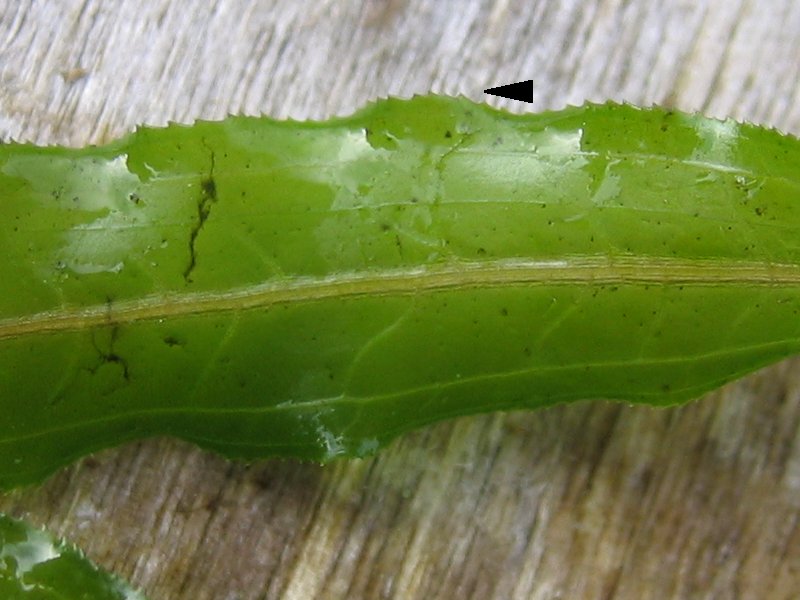
Easy to recognize: The toothed leaves of Potamogeton crispus
Kristian Peters -- Fabelfroh 14:40, 29 December 2005 (UTC), CC BY-SA 3.0, via Wikimedia Commons
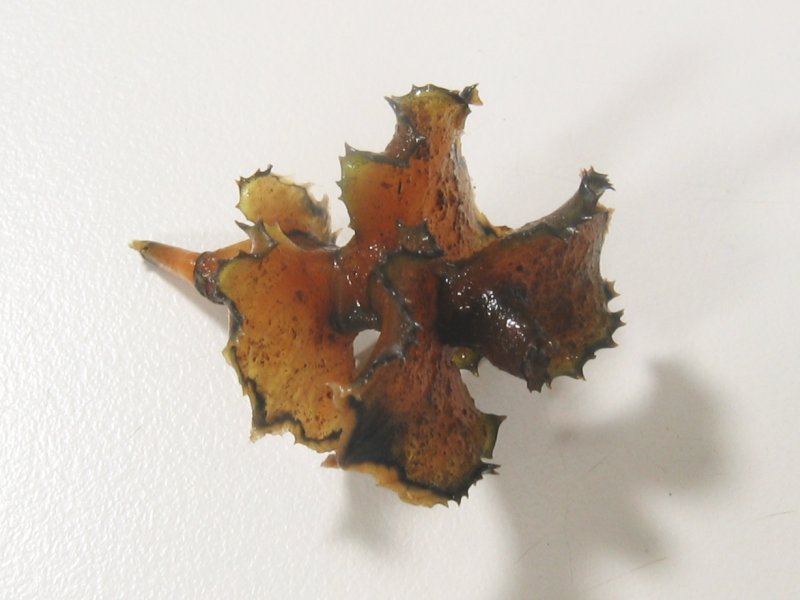
Form of preservation, which sinks to the bottom of the water in winter, this is also a vegetative possibility of spreading.
Kristian Peters -- Fabelfroh 13:07, 10 October 2006 (UTC), CC BY-SA 3.0 , via Wikimedia Commons
Where?
Duckweed grows on sunny, stagnant to slow-flowing and nutrient-rich (eutrophic) to polluted (hypertrophic) waters.
Appearance?
Free floating plant on the water or just below the water surface, with one or more small green leaves, with diameters of 3-6 mm. A short root filament grows into the water, for mineral absorption.
Special Features?
Gibbous duckweed (Lemna gibba), common duckweed (Lemna minor) and least duckweed (Lemna minuta) are difficult to distinguish from each other and often occur together. Duckweed often covers entire bodies of water, which prevents submerged plants from growing and can also affect water temperature.

"Klein kroos Lemna minor" by Rasbak is licensed under CC BY-SA 3.0
"Lemna minor Subaquatic view Lamiot 11" by Lamiot is licensed under CC BY-SA 4.0
Where?
The brooklime is found in ditches, springs and streams, also on the shores of lakes and ponds, and prefers cool waters.
Appearance?
European speedwell or brooklime is a perennial herbaceous plant that reaches growth heights of 30 to 60 cm. Fleshy, hollow stems grow from the creeping rhizome, from which elliptical, fleshy leaves with serrated leaf margins grow, blunt at the front. The racemose inflorescences arise from the leaf axils and contain 20 -25 flowers with sky-blue corollas with a diameter of 5 - 8 mm.
Special features?
As a salad, the fresh stems and leaves are considered digestive, they contain a lot of vitamin C and can also be cooked into a (bitter) vegetable.

"Veronica beccabunga, Cresson de cheval" by Jean Guérin is licensed under CC BY-NC-SA 2.0
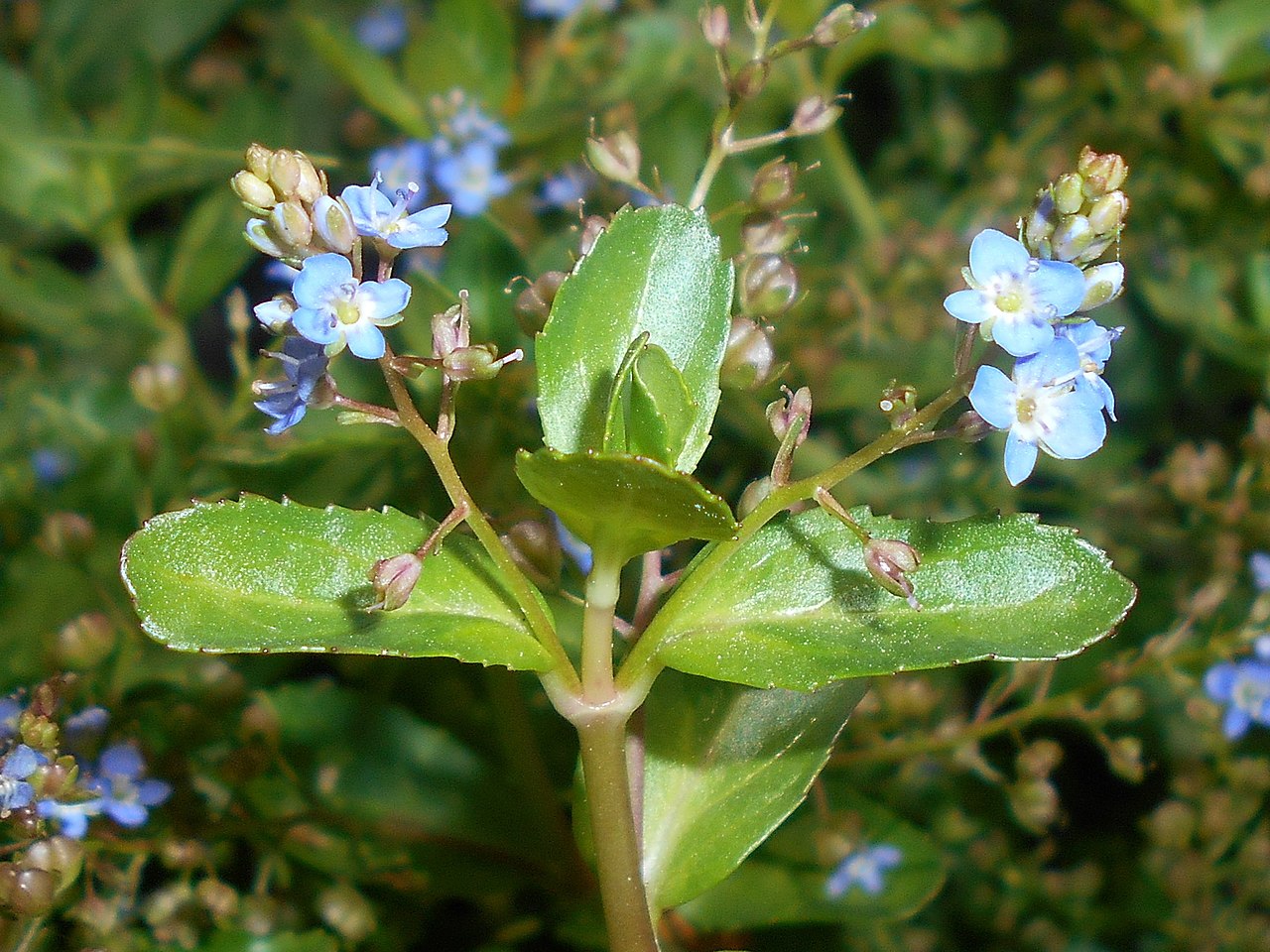
"Veronica beccabunga 2017-06-06 2905" by Salicyna is licensed under CC BY-SA 4.0
Where?
Golden saxifrage (Chrysosplenium) grow in Central Europe in wet places next to streams or on rocks in mountain gorges. However, many species also grow in drier places in rock crevices or on gravel slopes.
Appearance?
The Golden saxifrage form a genus of plants of the Saxifragaceae family with about 57 to 65 species. They are a small, perennial, herbaceous plant, with growth heights of 10-20 cm. The stem leaves can be opposite or alternate, are always undivided and grow without stipules, Characteristic of spleenworts are the inflorescences, which are usually surrounded by yellow to green, flat bracts. The calyx consists of usually four yellow, green or even reddish brown sepals with 4, 8 and rarely 10 stamens. The central ovary consists of 2 carpels, the bracts, sepals, stamens and carpels are mostly on one level..
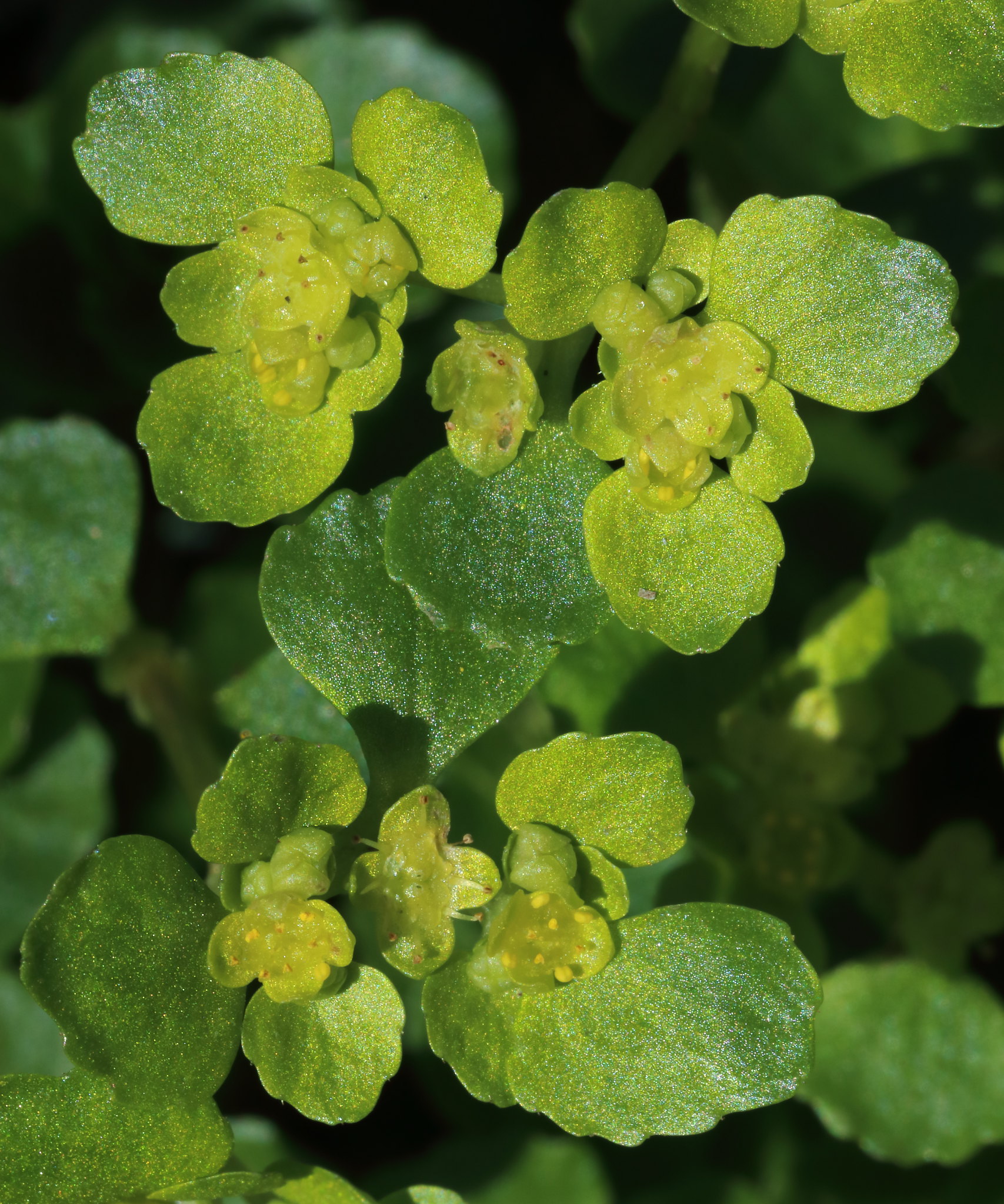
"Chrysosplenium oppositifolium (Opposite-leaved Golden Saxifrage)" by pluralzed is licensed under CC BY-ND 2.0
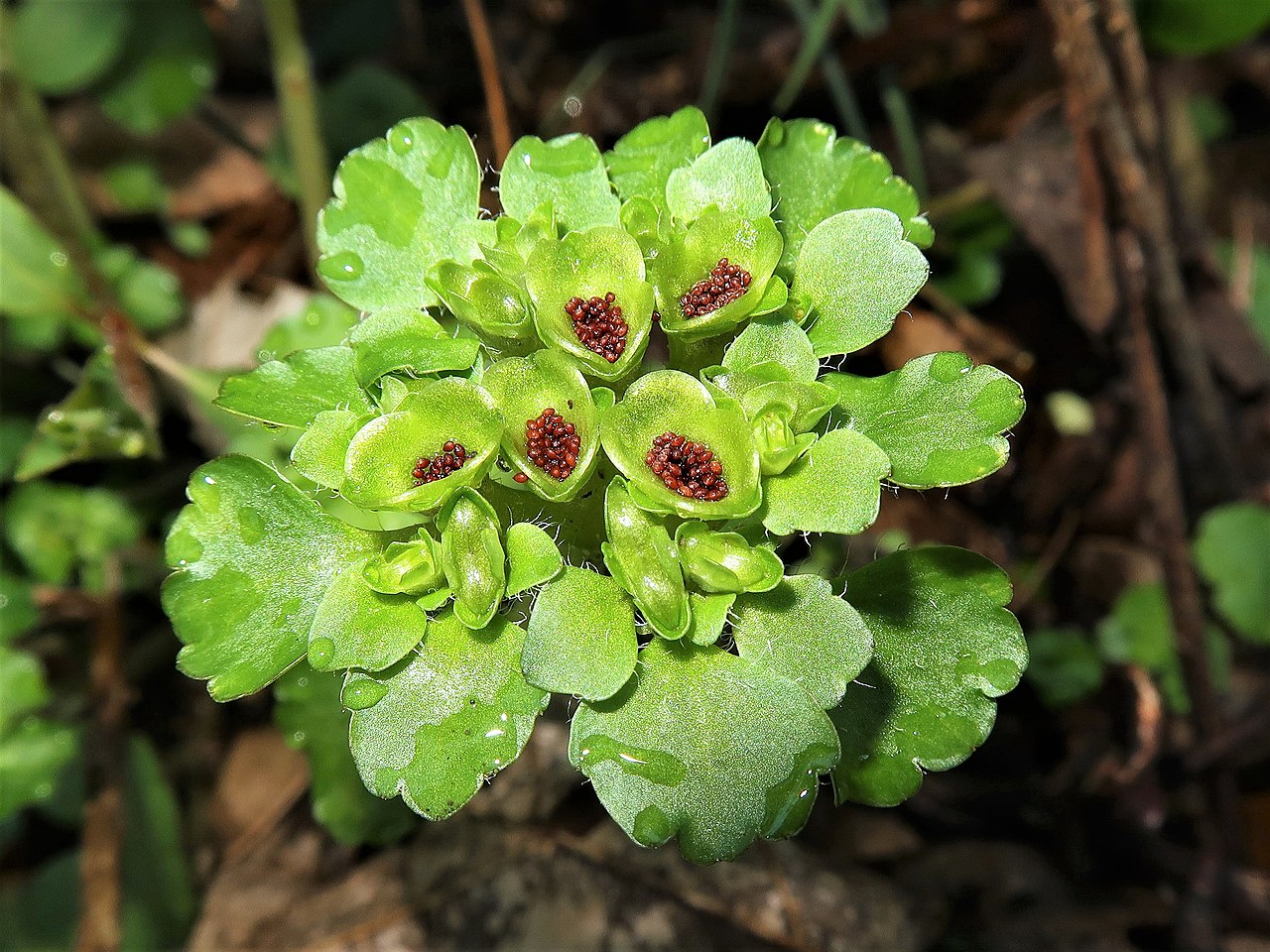
"Chrysosplenium japonicum 7" by Qwert1234 is licensed under CC BY-SA 4.0
Where?
Epilobium hirsutum grows scattered in shrubberies along streams, ditches, springs and in the fringe of willow scrub. It loves loamy, somewhat calcareous soils.
Appearance?
Is a perennial herbaceous plant with growth heights of 50 to 180 cm. The erect, richly branched stem is densely hairy with protruding hairs. The lower leaves are almost cross-opposite, the rest alternate. The leaf blades are narrow-lanceolate with a length of 6 to 12 cm and a width of 1 to 4 centimeters. The leaf margins have strong denticles. The flowering period is between July and September. Its purple petals are radially symmetrical and have a length and diameter up to 2 cm.
Special Features?
Occasionally,the Great willowherb is cultivated as an ornamental plant, so in Australia and America it is considered a widespread neophyte.
"4837-epilobium-hirsutum-20110718" by Malte is licensed under CC BY-SA 3.0

"23875415" by birding16 is licensed under CC BY-NC 4.0
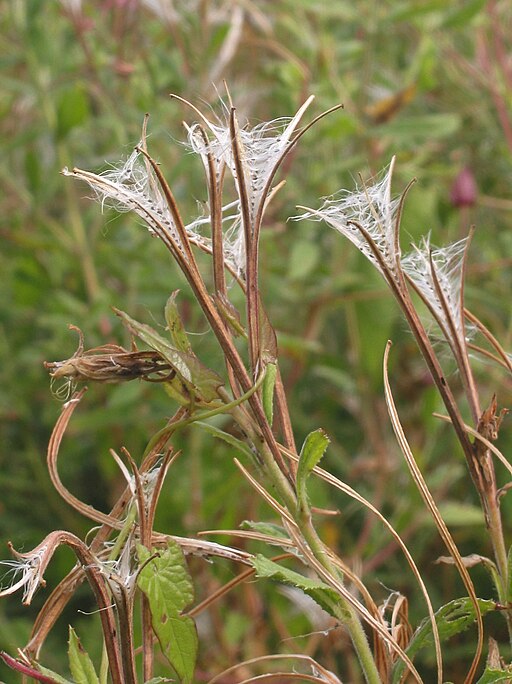
Great willowherb in the withered state
Rasbak, CC BY-SA 3.0 <http://creativecommons.org/licenses/by-sa/3.0/>, via Wikimedia Commons
Where?
Ground elder (Aegopodium podagraria) grows primarily in nitrogen-rich, shady, moist, loose soils. Due to the strongly proliferating rhizome, the low demands and thus rapid spread, it is generally considered a troublesome weed.
Appearance?
The Ground elder is a partially wintergreen, perennial herbaceous plant that reaches heights of 30 to 100 cm. The alternate leaves are ovate-oblong, have a serrated margin and consist of 2 to 3 leaf segments. The flat and 12- to 25-rayed inflorescence consists of many small white flowers that bloom from June to July.
Special Features?
Ground elder was used as a medical plant in the Middle Ages, but its effect has not been proven. It is also considered a tasty wild vegetable.
"Blütendolden Girsch" by 4028mdk09 is licensed under CC BY-SA 3.0
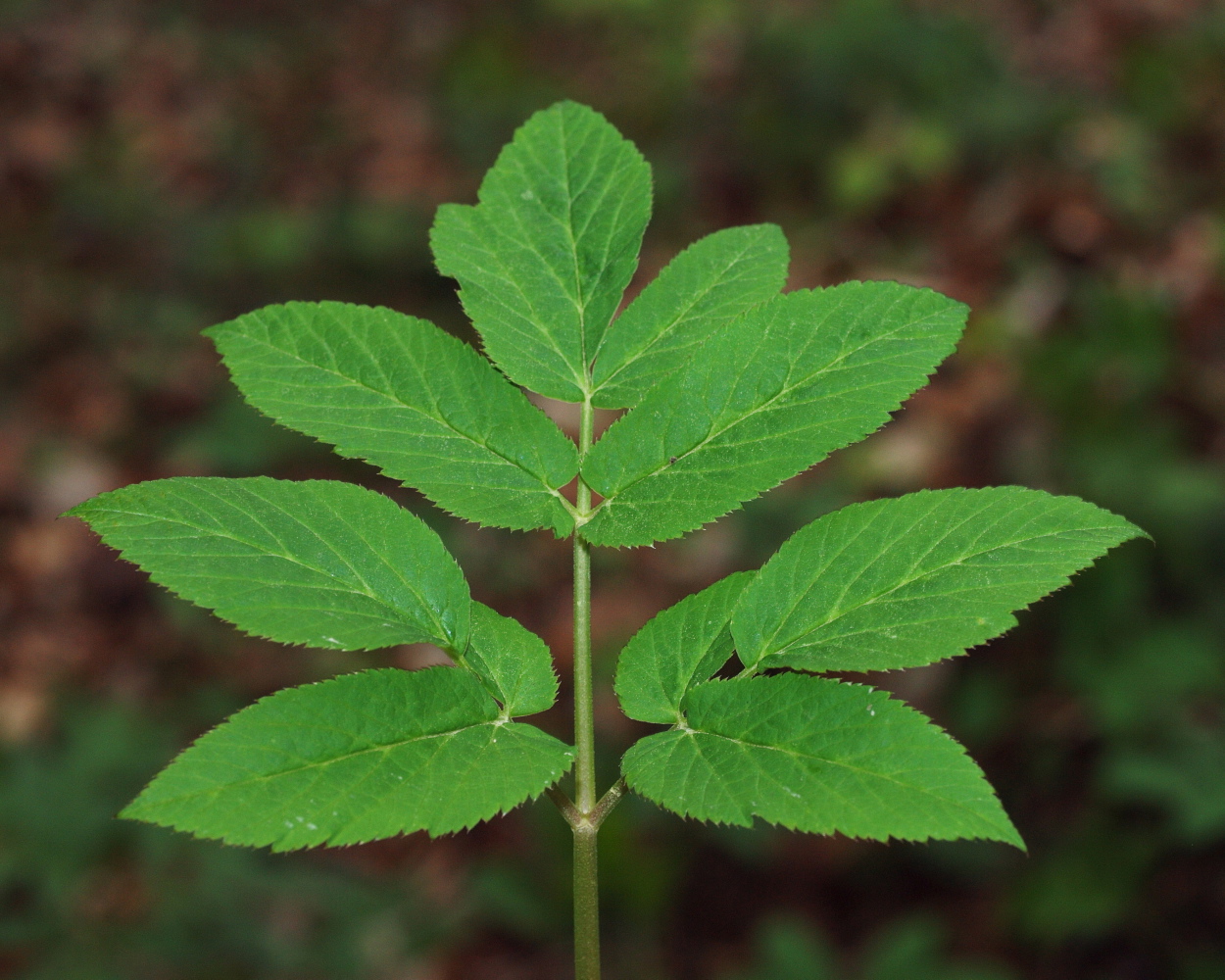
"Aegopodium podagraria (48°11' N 16°03' E)" by HermannFalkner/sokol is licensed under CC BY-NC-SA 2.0
Where?
Hemp-agrimony (Eupatorium cannabinum) usually thrives in moist meadows, wet meadow fallows, on the banks of ditches and streams, or along forest edges and in woodlots. Common waterwort is a nutrient and moisture indicator.
Appearance?
Hemp-agrimony is a deciduous, perennial, herbaceous plant that reaches growth heights of 50 to 175 centimeters. The erect, short-haired, richly leafy stem, branched only in the upper part, often has a reddish tinge. The stem leaves are arranged opposite and usually palmate with 3-5 pinnae with toothed leaf margins. The total inflorescence contains numerous, small, dense, partial inflorescences. The corollas contain four to six tubular flowers of five pink, rarely white petals. The flowering period is from July to September
Special Features?
Hemp-agrimony is widespread throughout Europe, western Asia, and northern Africa. In North America and Australia it is a neophyte. Insects love the Hemp-agrimony.

"Eupatorium cannabinum, Hemp-agrimony, Koninginnekruid" by ekenitr is licensed under CC BY-NC 2.0

"Eupatorium cannabinum 1" by Hladac is licensed under CC BY-SA 4.0
Where?
The hornwort grows best in nutrient-rich (eutrophic), stagnant to slow-flowing and summer-warm waters, with humus-rich muddy soils in water depths of 0.5 to 10 meters.
Appearance?
Submerged living plant with often reddish stems between 30 and 100cm long. Dark green, once, or twice branched, rigid leaves, arranged radially at regular intervals around the stem.
Special Features?
Rare, inconspicuous flowers up to 3mm long, between July and September. Its dense growth can outcompete native underwater vegetation, leading to loss of biodiversity.
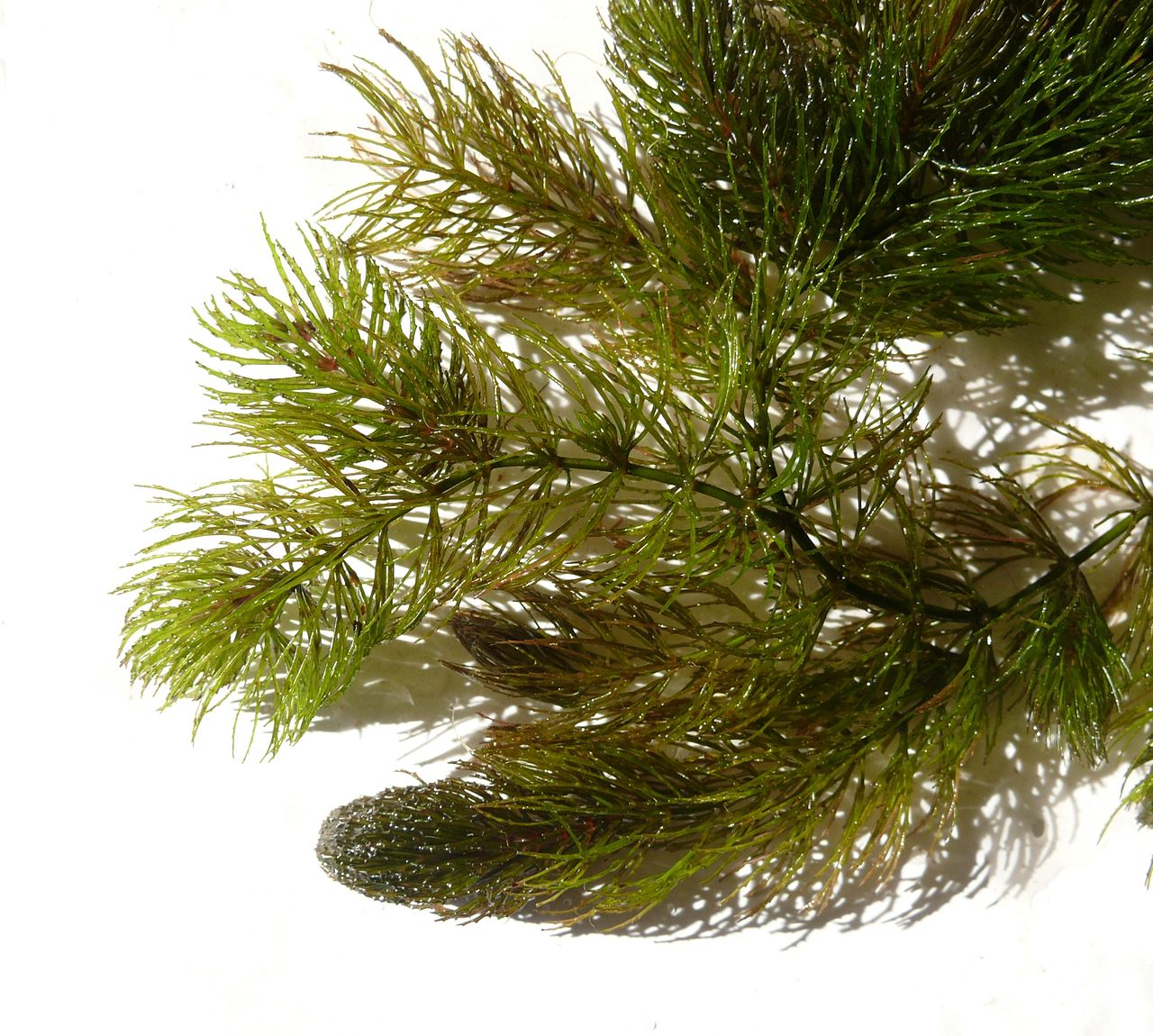
"Ceratophyllum demersum 240907a" by Bernd Haynold is licensed under CC BY-SA 3.0
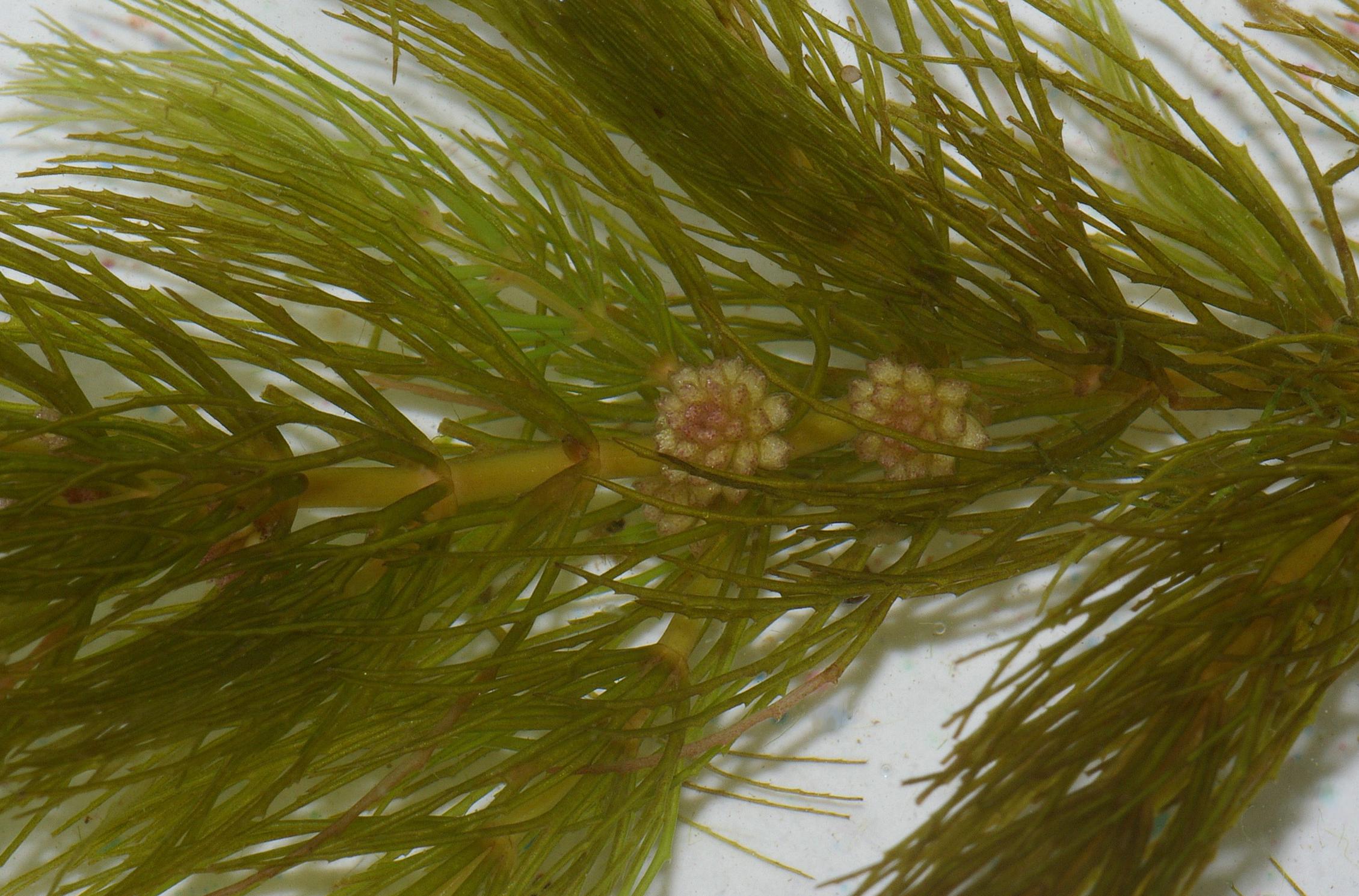
"Ceratophyllum demersum (inflorescence)" by Christian Fischer is licensed under CC BY-SA 3.0
Where?
Mead wort grows in much of Europe on moist to wet soils, with nutrient-rich and weakly to moderately acidic soils. It is a light to semi-shade plant and is usually found in ditches, watercourse margins and wet meadows.
Aussehen?
Mead wort is a perennial, herbaceous plant that reaches growth heights of 50 to 150 centimeters. The stems are reddish in color and branch only above, below the inflorescences. The leaves are dark green and have a white down on the underside. The inflorescences bloom from June to August and consist of many small cream to yellowish white flowers that develop into slightly twisted nutlets after the flowering phase. The flowers give off an intense honey to almond-like odor.
Special features?
In almost all of Europe the mead wort is native, in North America it is an undesirable neophyte. In both Europe and America, it is considered an undesirable pasture herb that is avoided by grazing animals, so it is controlled in many places. It is used in many places to flavor foods and beverages because of its smell and taste. It has also been used in part as a fragrant plant and in herbal medicine

"Filipendula ulmaria – meadowsweed – Echtes Mädesüß" by Nichlas Turland is licensed under CC BY-NC-ND 2.0

"Filipendula ulmaria" by Michael Wunderli is licensed under CC BY 2.0
Liverworts
Where?
Mosses of the liverwort group (Marchantiophyta) can be found on many stream banks or in moist areas near springs. They grow in individual groups or in extensive lawns on stones or on nutrient-poor soils in the shade. Of these, some are more sensitive to nutrients, such as the liverwort Chiloscyphus polyanthos (see photo below), which is found in Luxembourg, and some are less so. The most widespread is the fountain liverwort (Marchantia polymorpha).
Appearance?
Liverworts grow rather flat and often overlay each other like lobes. Some form a kind of cup on their surface. Many liverworts form spore capsules after some time, which are roughly comparable to fertilized seeds of higher plants.
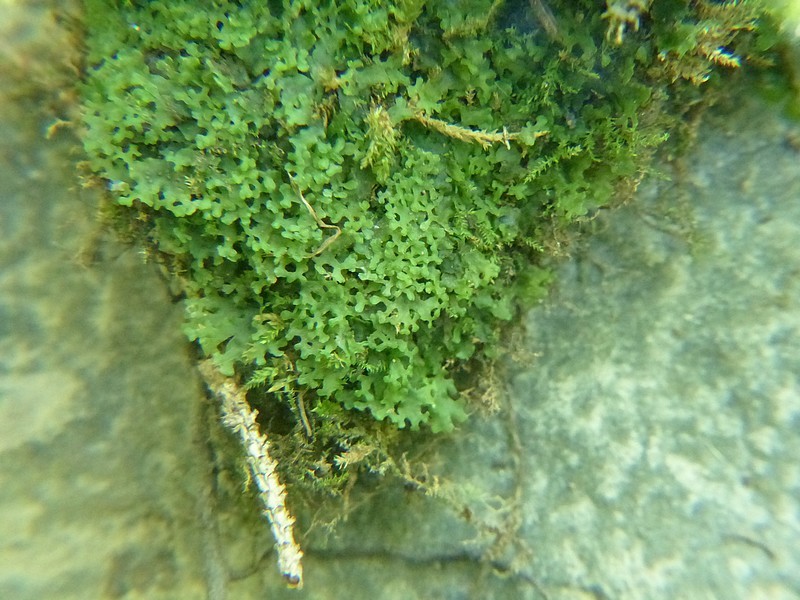
The liverwort Pellia endiviifolia is found in fresh to wet, shady to semi-shady locations in woods or on the banks of streams.
"File:Apopellia endiviifolia 67745395.jpg" by Christian Grenier is marked with CC0 1.0.
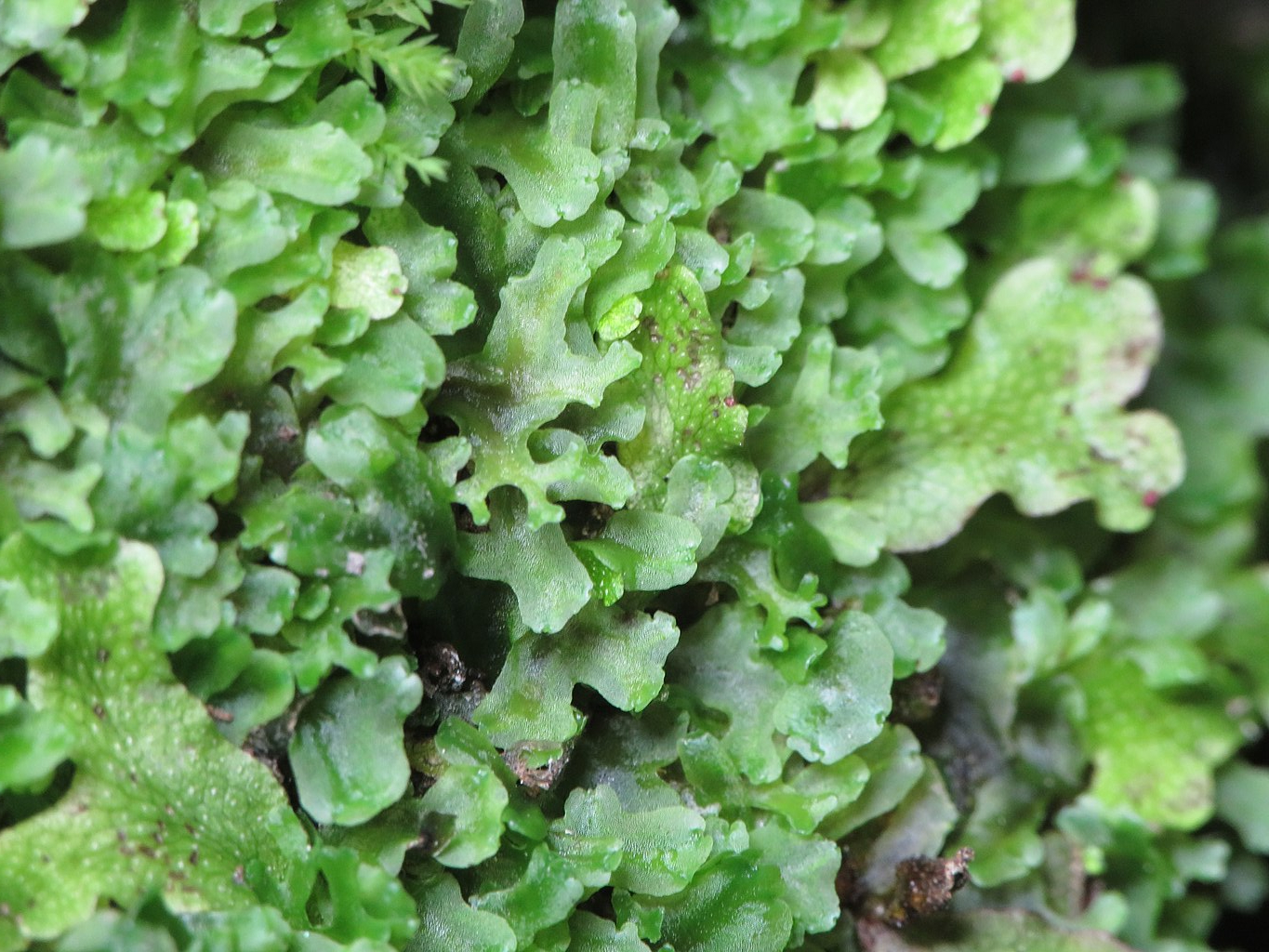
"File:Apopellia endiviifolia 84402440.jpg" by Calum McLennan is licensed under CC BY 4.0.

"File:Pellia endiviifolia (fb, 144835-474709) 5112.JPG" by HermannSchachner is marked with CC0 1.0.

It grows, for example, in shady forest streams, forest springs, ditches, in bogs and swamps.
"File:Chiloscyphus polyanthos (a, 143553-482324) 3413.JPG" by HermannSchachner is marked with CC0 1.0.

Umbrella liverwort (Marchantia polymorpha), forms cups on its surface.
sys-one (Franz Mattuschka), CC BY-SA 3.0 , via Wikimedia Commons
Water-Mosses
Where?
The group of spring mosses belong to the mosses living under water. The moss Philonotis fontana, colonizes light-rich, lime- and nutrient-poor, mostly cold spring areas. It occurs in bogs and on trickling spring rocks. The common water moss Fontinalis antipyretica grows mostly in slow-flowing, rarely in standing waters. It is mostly found in clean, nutrient-poor (oligotrophic) streams and larger lakes in Luxembourg. It grows there on stones and occurs in the low mountain range.
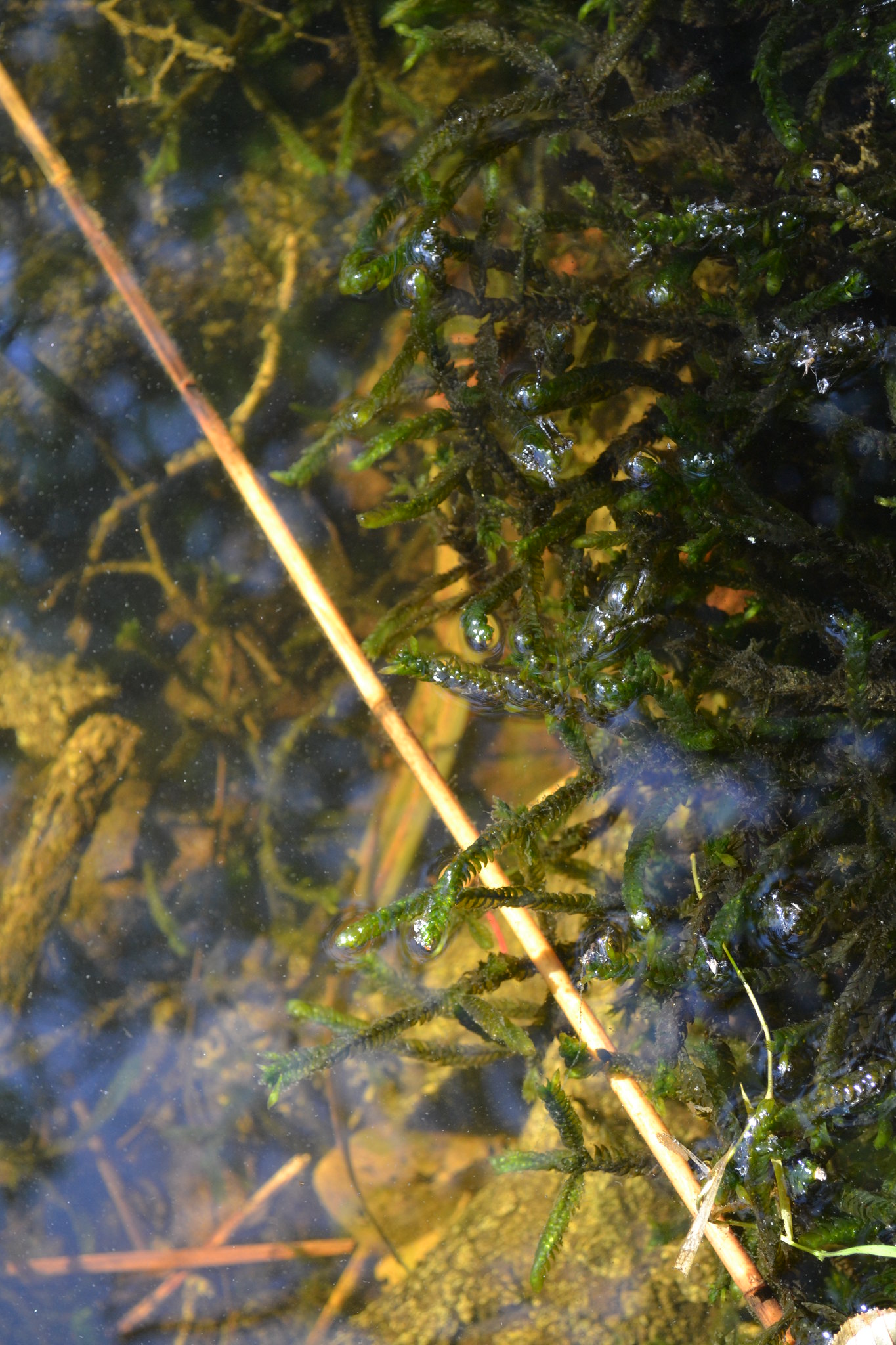
"Fontinalis antipyretica" by Oskar Gran is licensed under CC BY-NC 2.0.
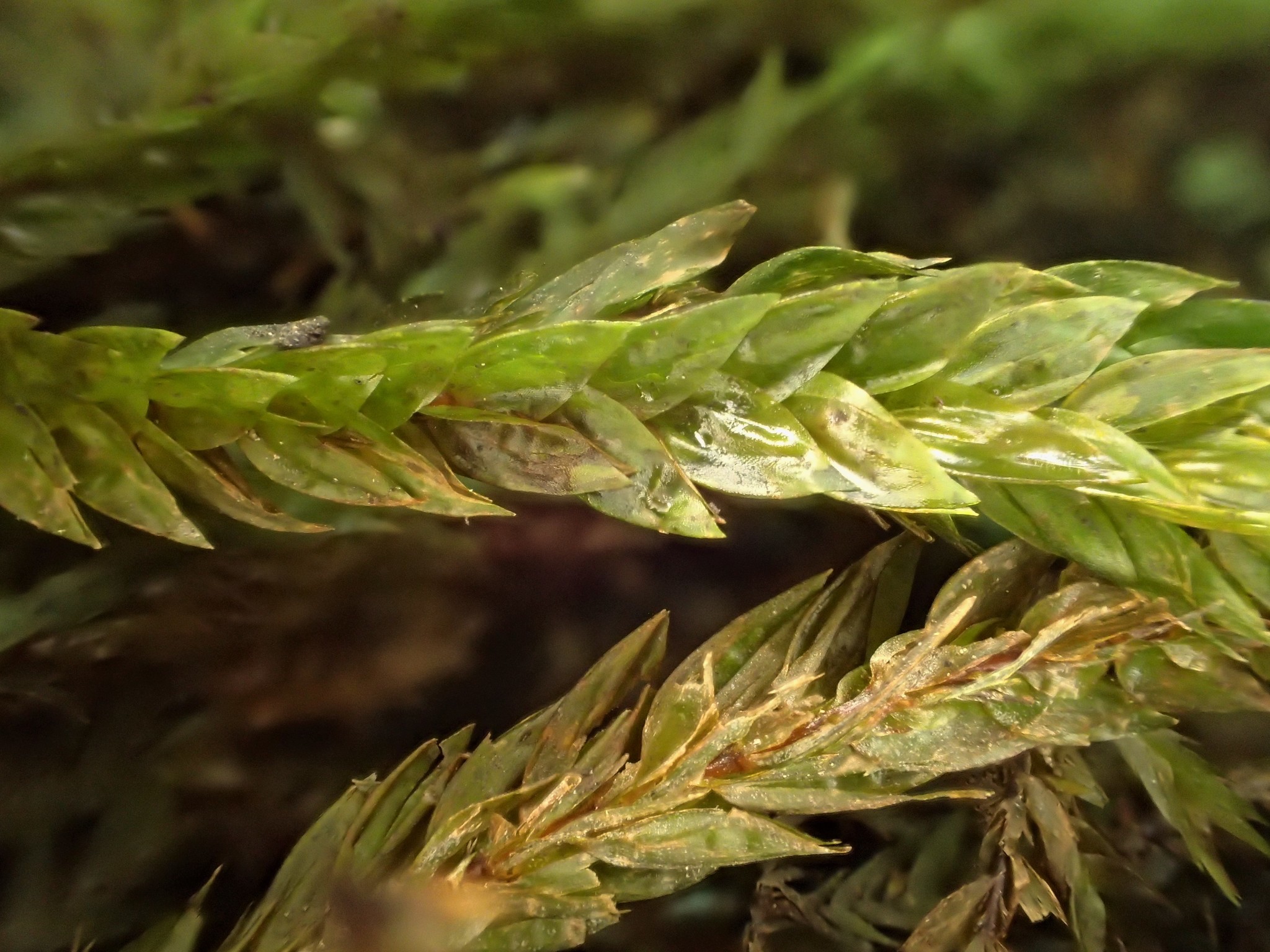
"Fontinalis antipyretica antipyretica" by kkellman is licensed under CC BY-NC 4.0.
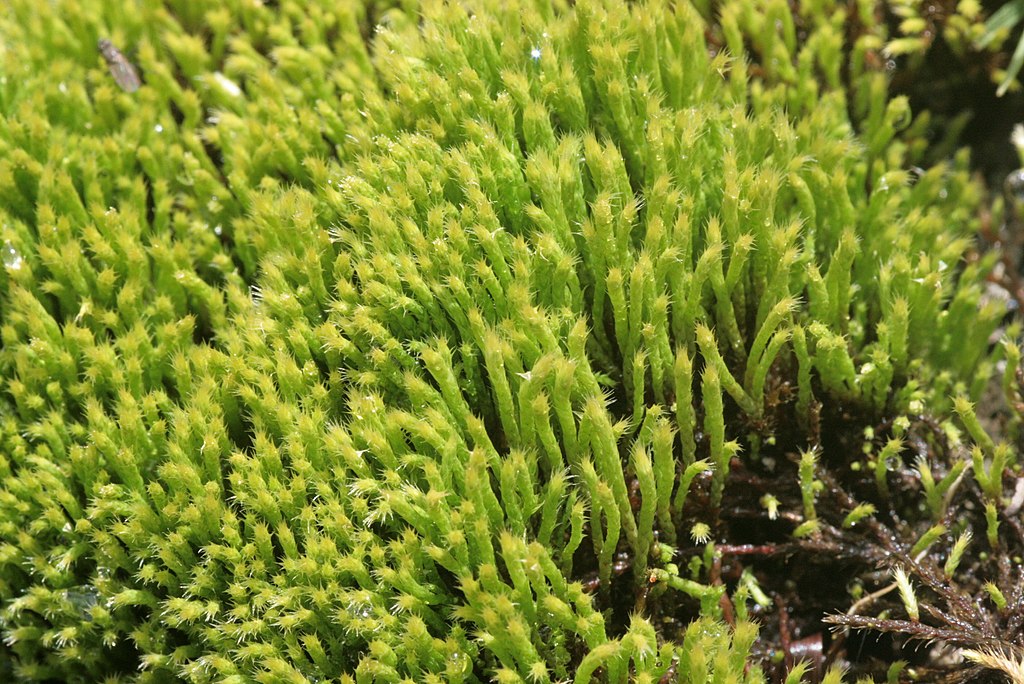
The moss Philonotis fontana is particularly sensitive to nutrient-rich sites; it also grows over stones.
"File:Philonotis fontana (b, 110226-471210) 4554.JPG" by HermannSchachner is marked with CC0 1.0.

"Philonotis fontana" by aspidoscelis is marked with CC0 1.0.
Where?
Stinging nettles are a typical indicator plant for nitrogen-rich soils, whose growth and spread is promoted in particular by nitrogen input. Four species of stinging nettle occur in Central Europe, which grow very undemandingly and therefore colonize a wide range of habitats.The most common species is Urtica dioica.
Appearance?
Nettles grow as an annual or perennial herbaceous plant with (depending on the species) growth heights between 10 and 300 cm. The often square stems are partly branched, partly unbranched and grow mostly upright or ascending. All green parts of the plant are covered with stinging and bristly hairs. The leaves are usually arranged cross-opposite, have an elliptical, ovoid or circular appearance and are usually toothed at the leaf edge..
Special features?
Typical of stinging nettles are the stinging hairs, which break off on contact and release stinging liquid into and onto the skin, causing (depending on the species) more or less painful wheals.

"Urtica dioica Stinging Nettle - Schmitz Park" by brebooks is licensed under CC BY-SA 2.0
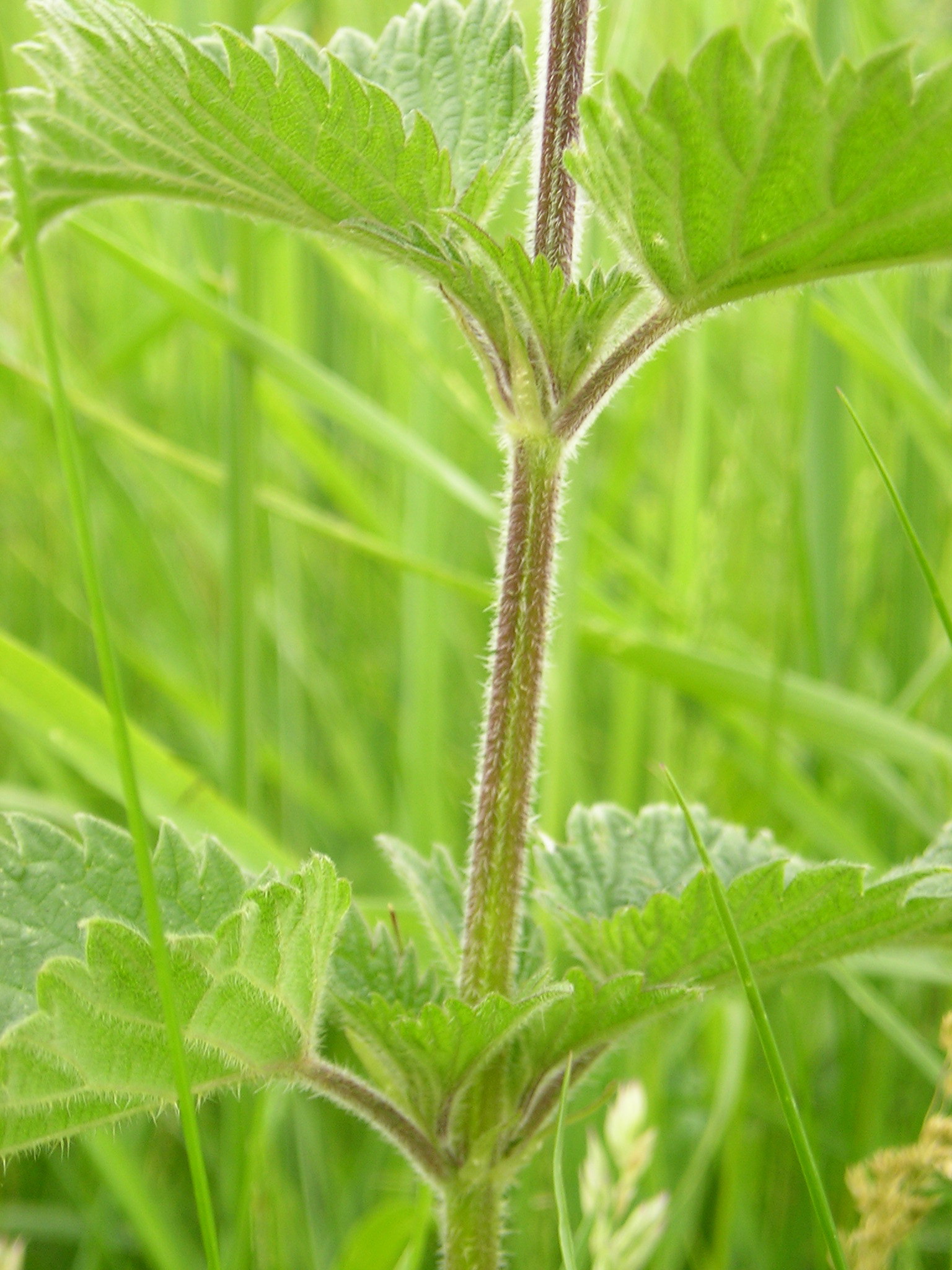
"Utrica diocia" by Anna is licenced under CC BY 2.0
Where?
Reed canarygrass often grows in large groups along or in flowing, oxygen-rich waters on nutrient-rich clay and mud soils, occasionally on dry sites. It is a light-loving species, but also tolerates partial shade.
Appearance?
Reaches growth heights of 0.5 to 2 meters and has elongated, grass-like, hairless leaves that usually grow over 15 mm wide. The youngest leaves are usually rolled. The flowers at the end of the stem are 10-20 cm long panicles consisting of several small branches, each with one flower. The flowering period is from June to July.
Special Features?
Can root up to 3.5 meters deep and is popularly grown as a mowing grass, as it is very productive and suitable as a forage grass.

"4382804" by Matthew Salkiewicz is licensed under CC BY-NC 4.0
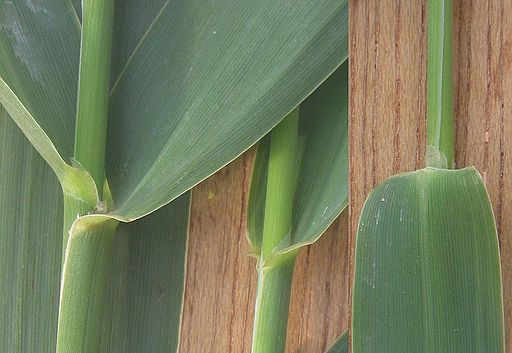
Leaf base is hairless (in contrast to that of the reed).
Rasbak, CC BY-SA 3.0 , via Wikimedia Commons
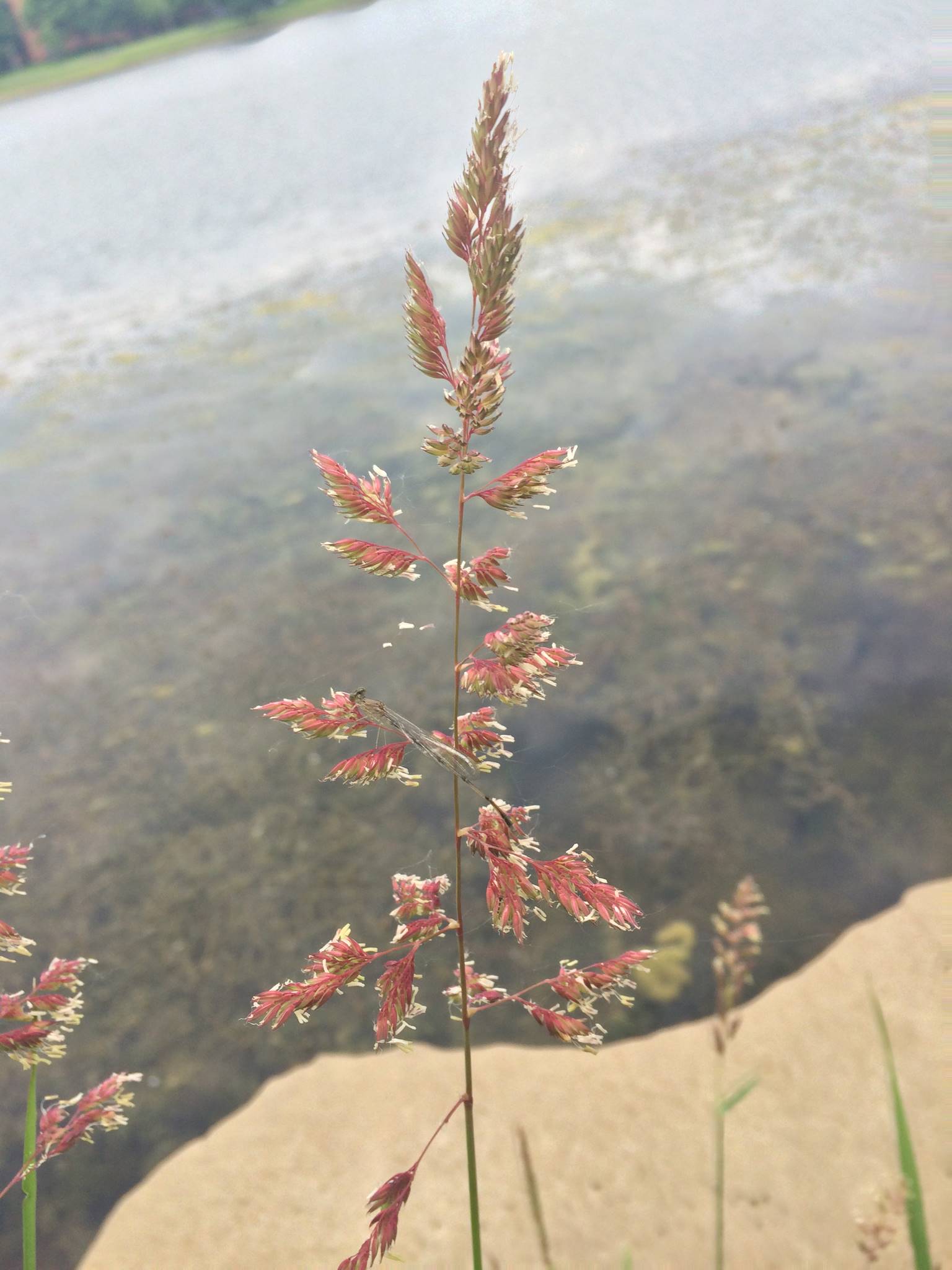
"3978121" by Paul Marcum is licensed under CC BY-NC 4.0
Where?
Grows gregariously as a reed bed on banks or in ditches with standing or slowly flowing water and strongly changing water levels. It prefers nutrient- and base-rich, mostly calcareous, humic muddy soils and is light- and heat-loving.
Appearance?
Reed mannagrass is a perennial herbaceous plant 80 to 150 (sometimes 200) cm tall, with widely creeping, stout rhizomes. The culms are round with up to 1 cm in diameter. The leaves are glabrous and rough, growing up to 60 cm long and up to 2 cm wide. The flower panicles grow between 20 and 40 cm long and stand in clusters of spikes up to 1 cm long. The spikes are narrowly elongated with five to eleven brownish white flowers. The flowering period is from June to August.
Special Features?
Is a nutritious forage plant and is readily eaten by cattle and horses. On riverbanks it is suitable for the containment of erosion.

"19874975" by Grzegorz Grzejszczak is licensed under CC BY-SA 4.0

"Glyceria maxima" is licensed under public domain
Where?
River water-crowfoot grows in fast-flowing rivers and streams in moderately warm to warm areas.
Appearance?
River water-crowfoot is a wintergreen, herbaceous plant that forms stems up to 6 meters long. On it grow at least 8 cm long, thread-like and multi-branched submerged leaves. Between June and August form white flowers with yellow stamens that have a diameter of up to 2 cm.
Special features?
Underwater, egg-shaped stipules are formed, above water, small fruits are formed, which contain between 34 and 63 nutlets.


"Flutender Hahnenfuß" by Grzegorz Grzejszczak is licensed under CC BY-SA 4.0
Where?
The Sago pondweed can be found in many water types and is indifferent for the waterquality and belong to the flloating leaf water plants. It occurs in oligo- (low nutrient content) as well as in eutrophic, slow flowing or still waters. It grows mostly on humic soils and requires water depths of 20 to 350 cm.
Appearance?
It is a permanently submerged, deciduous, highly branched plant with limp, filamentous leaves that grow up to 3 mm thick.
Special Features?
The plant forms 2-5 cm long spikey flowers from May to September. The waterplant may also be known from the synonym Stuckenia pectinata.
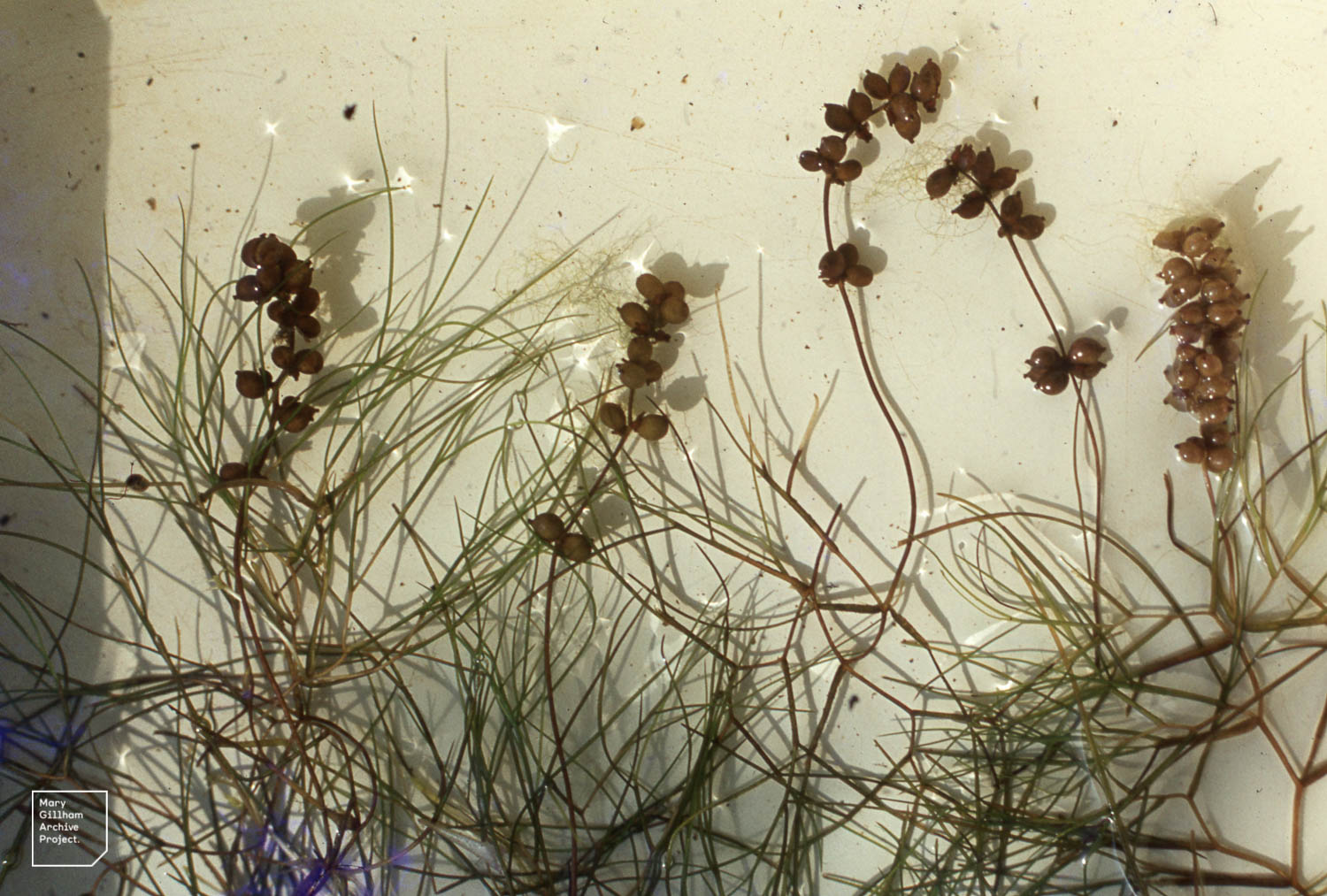
Where?
Grows in nutrient-rich, stagnant to slow-flowing waters at depths of 1.5 to 3 meters.
Appearance?
Perennial, herbaceous, always submerged plant with alternate, up to 4.5 cm wide and up to 30 cm long, pointed and slightly transparent pale green to yellow leaves. Between June and September, spikey inflorescences form, which emerge above the water surface.

"Potamogeton lucens" by Andreas Rockstein is licensed under CC BY-SA 2.0
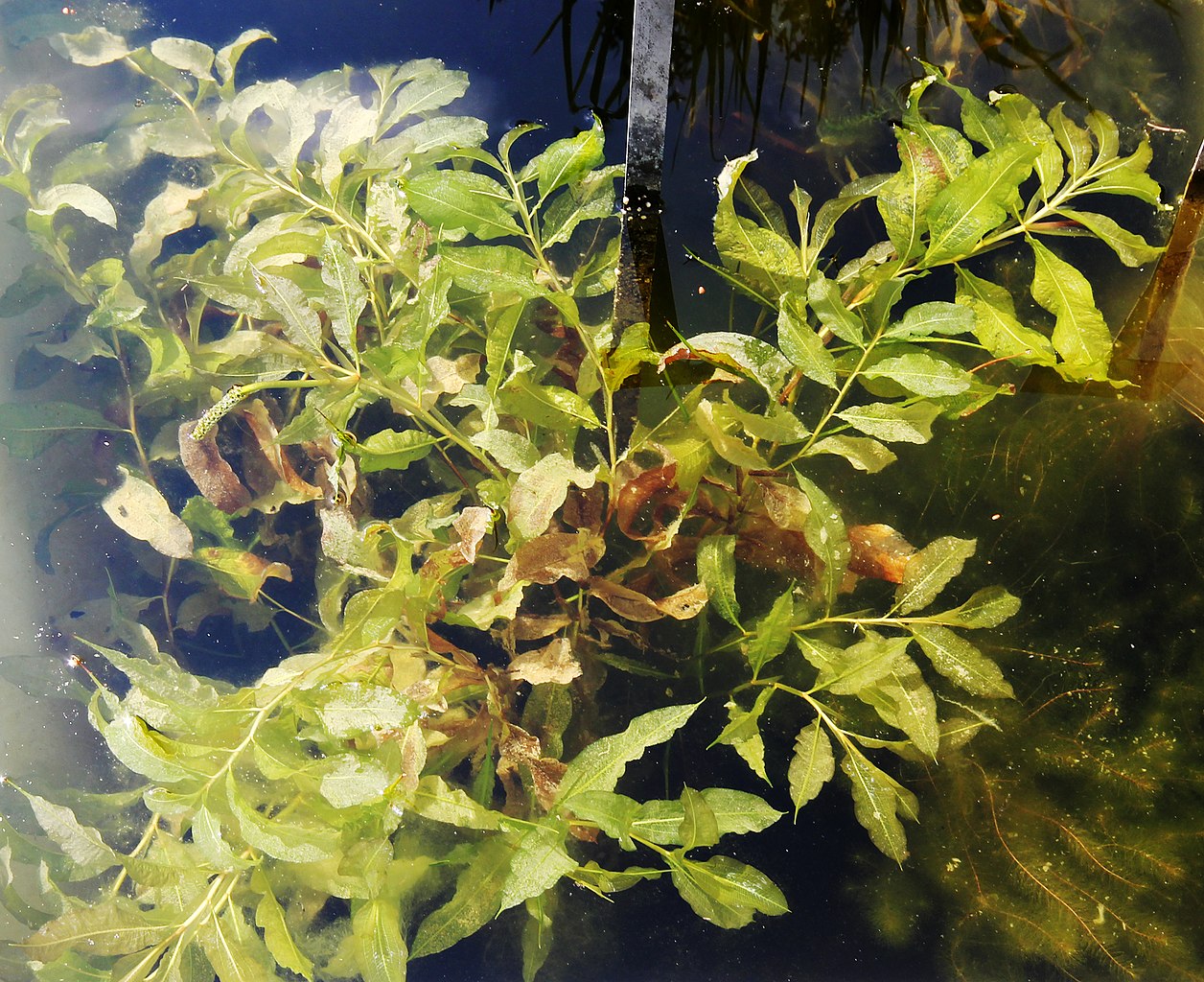
Where?
Stoneworts require clean, nutrient-poor and calcareous water. They are found in both standing and flowing waters.
Appearance?
Stoneworts (Charophyceae) are a form-rich class of green algae with over 70 different species. Chara vulgaris & Nitella flexilis are the most represented. They form shoots up to 60 cm long with numerous side shoots up to 1 mm thick, on which pinnate branches of 5 or 7 are in whorls. Particular are the unbarked terminal limbs of the branches and the brown/grey and orange reproductive cells below the whorls.
Special features?
Stoneworts can colonize freshly formed water bodies and water accumulations as a pioneer plant. When removed from the water, the alga often develops a specific odor, which is said to resemble mustard oil.
.jpg)
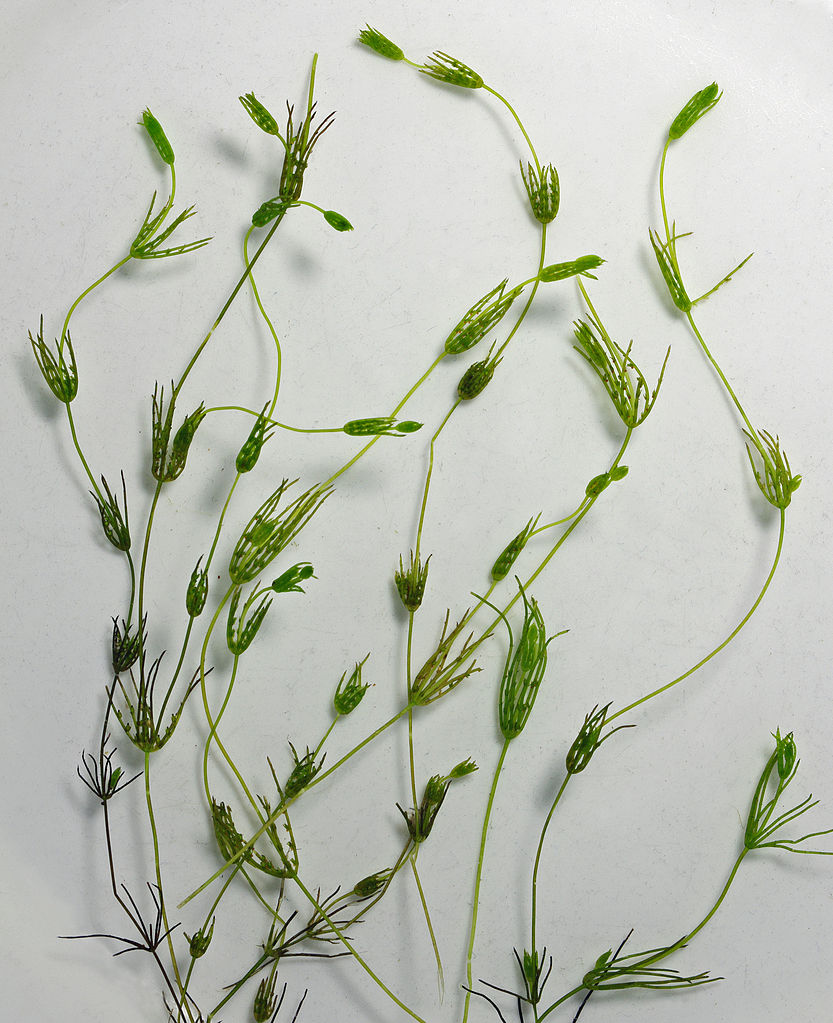
"CharaGlobularis" by Christian Fischer is licensed under CC BY-SA 3.0
Where?
Shore zones of lakes or ponds. The roots can tolerate waterlogging.
Appearance?
The blooming period of the showy yellow and bushy flowers extends from spring to summer, depending on location and distribution area. The inflorescence stem in the middle or upper stem area, leaf axillary is 1.5 to 3 centimeters long, smooth or sparsely glandular or shaggy hairy.
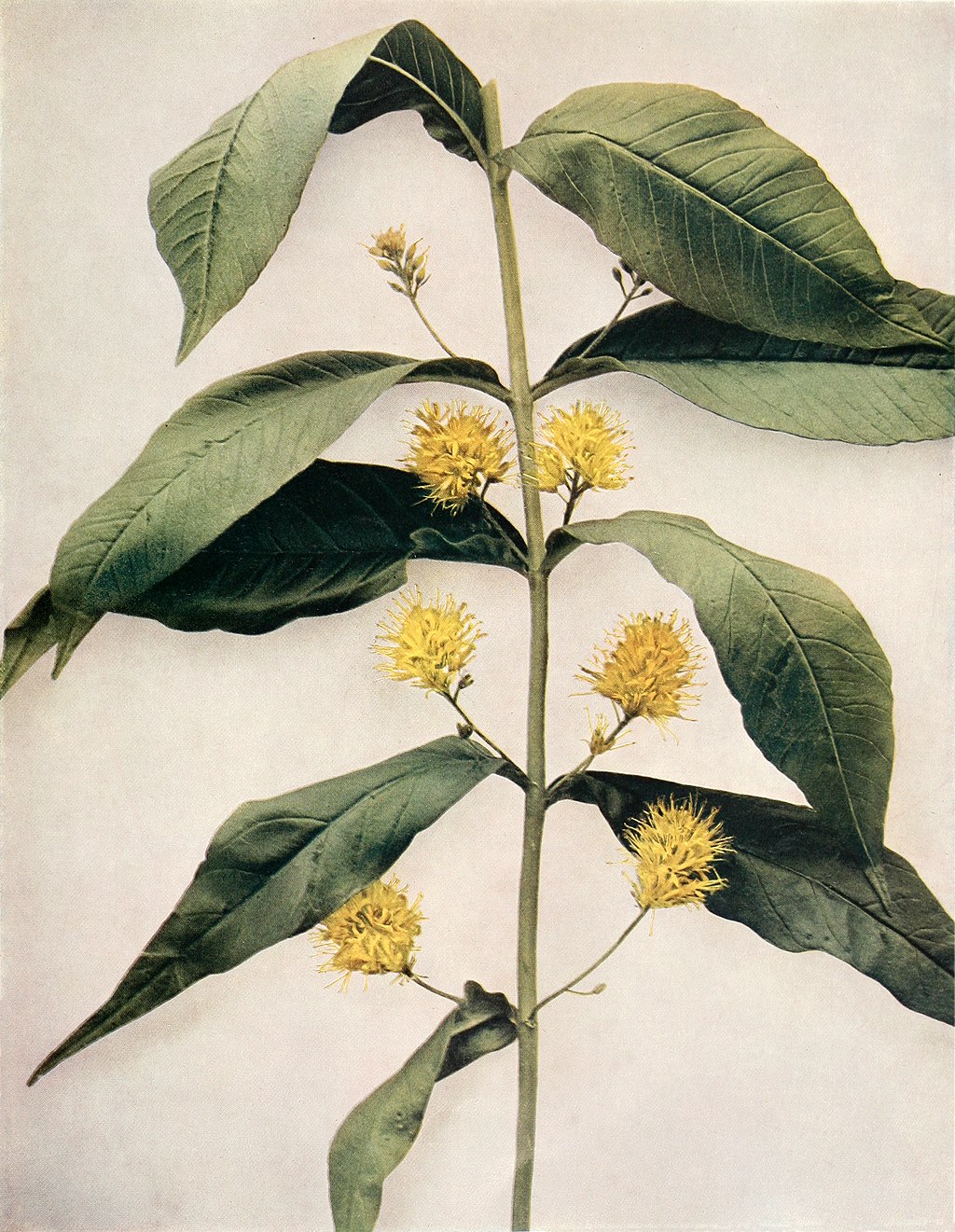
Lysimachia thyrsiflora WFNY-163.jpg, Public Domain

"Lysimachia thyrsiflora sl50" by Stefan.lefnaer is licensed under CC BY-SA 4.0.

"Tufted Loosestrife (Lysimachia thyrsiflora) - Time, Norway 2021-08-07" by Ryan Hodnett is licensed under CC BY-SA 4.0.
Where?
Water blinks (Montia fontana) is a marsh plant found in streams, ditches, and wet fields worldwide. It thrives best in nutrient-poor soils.
Appearance?
Water blinks grows as an annual to perennial herbaceous plant and reaches growth heights up to 30cm, often found in mat-like stands. Stems grow decumbent to erect and sometimes float in water. Foliage leaves grow opposite in lanceolate shape with length from 3 to 20mm. In the flowering period from June to August, racemose inflorescences with up to eight flowers are formed. The flowers are radially symmetrical, with white petals and up to 3 mm in diameter
Special features?
The capsule fruits are self-propagating by rolling up the three fruit flaps and then catapulting the seeds out to a distance of 2 meters and a height of 0.6 meters.

"Blinks (Montia fontana)" by --Tico-- is licensed under CC BY-NC-ND 2.0
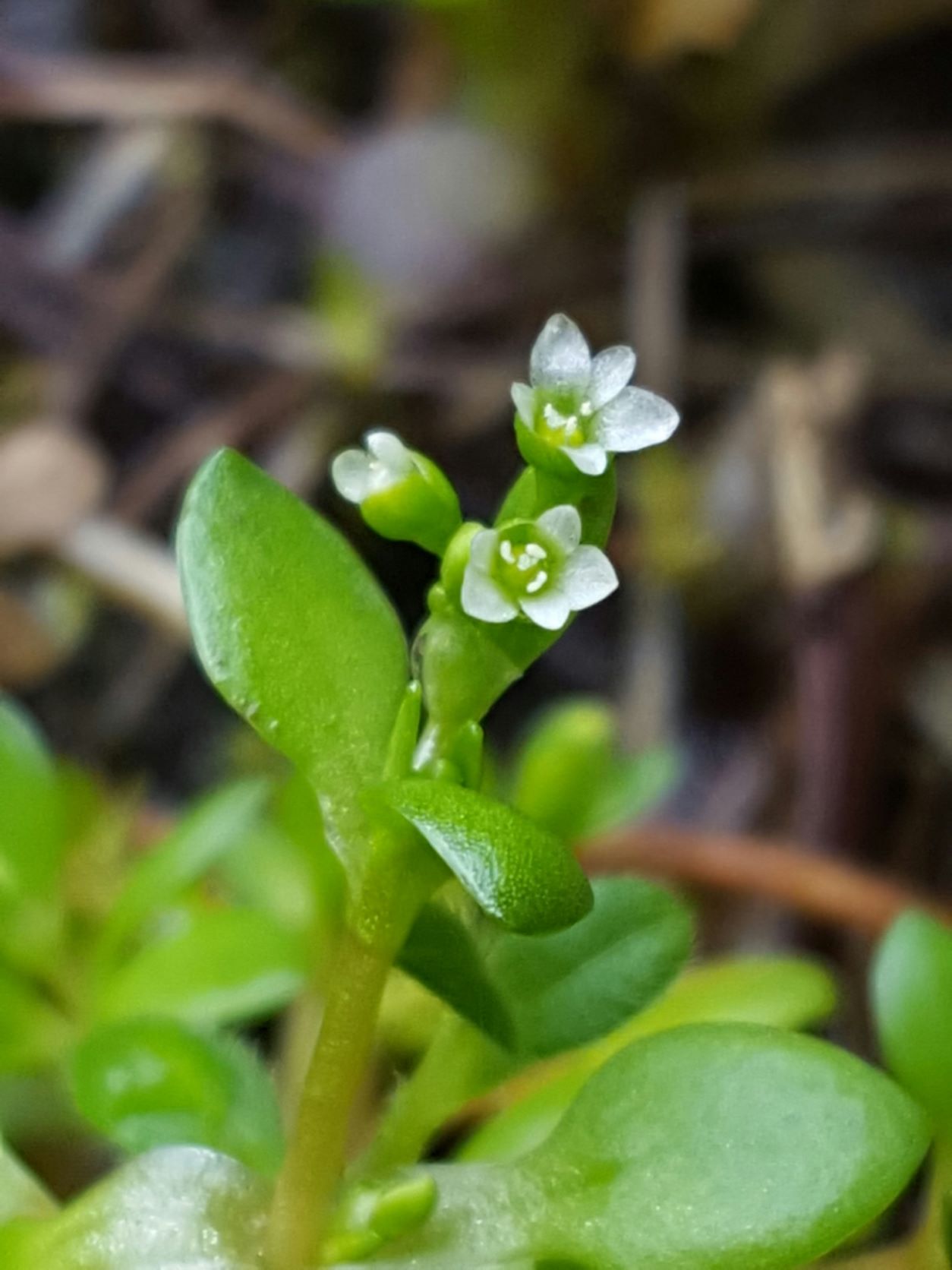
"6814123" by Alex Abair is licensed under CC BY-NC 4.0
Where?
Grows in swamps, on banks and frequently shallow flooded sites, requires constantly moist soils.
Appearance?
Perennial, cryptophyte plant. Smooth stem with growth height between 30 and 120 cm, with filamentous shoots at regular intervals, which are formed for reproduction. From May to June, an egg-shaped spore ear forms at the top of the horsetail..
Special Features?
May be toxic to cattle, easily confused with marsh and field horsetail, Water horsetail hybridizes with field horsetail to form the so-called Equisetum × litorale. The Water horsetail is hollow.
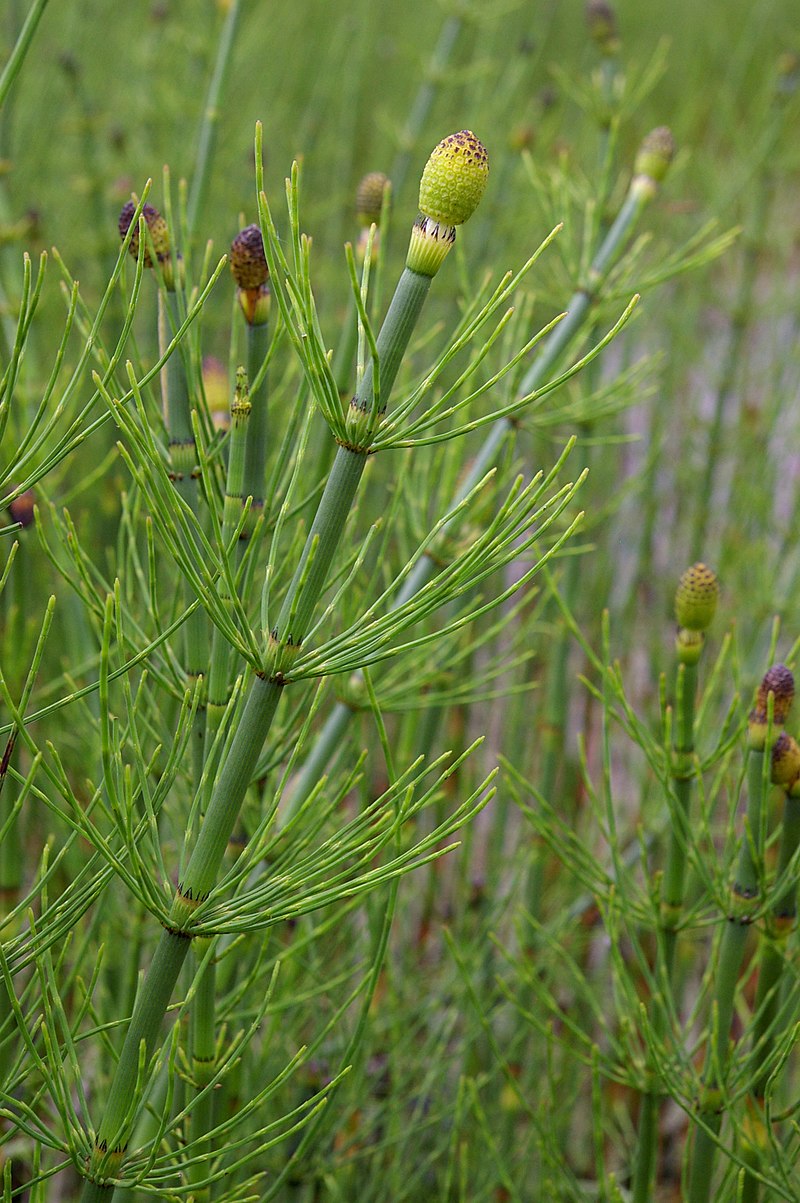
"EquisetumFluviatile" by Christian Fischer is licensed under CC BY-SA 3.0
Where?
Grows mostly in sunny locations with slow flowing and stagnant waters with water depths of min. 80 cm.
Appearance?
The most common water lilies are perennial herbaceous aquatic plants, anchored by a long rhizome from the soil surface. Alternating aquatic and floating leaves are formed, in a heart-shaped to arrow-shaped or oval to roundish form with a characteristically incised leaf blade. Flowers rise from July to September above the water surface and can be of different colors depending on the species..
Special Features?
Some pond and water lilies can be toxic, especially the white water lily can cause respiratory paralysis.
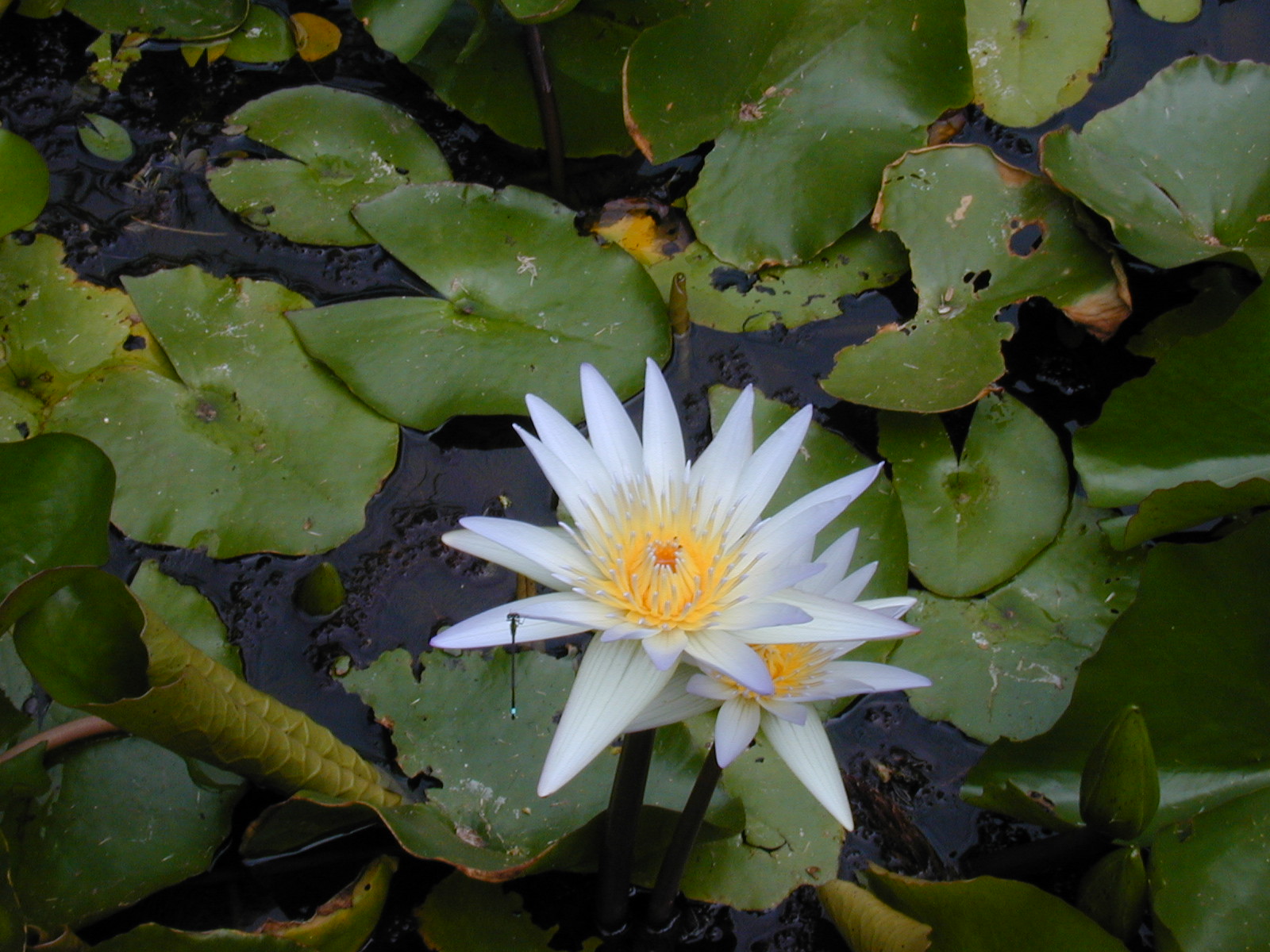
Nymphaea daubenyana - "Starr 010914-0052 Nymphaea sp." by Forest & Kim Starr is licensed under CC BY 3.0
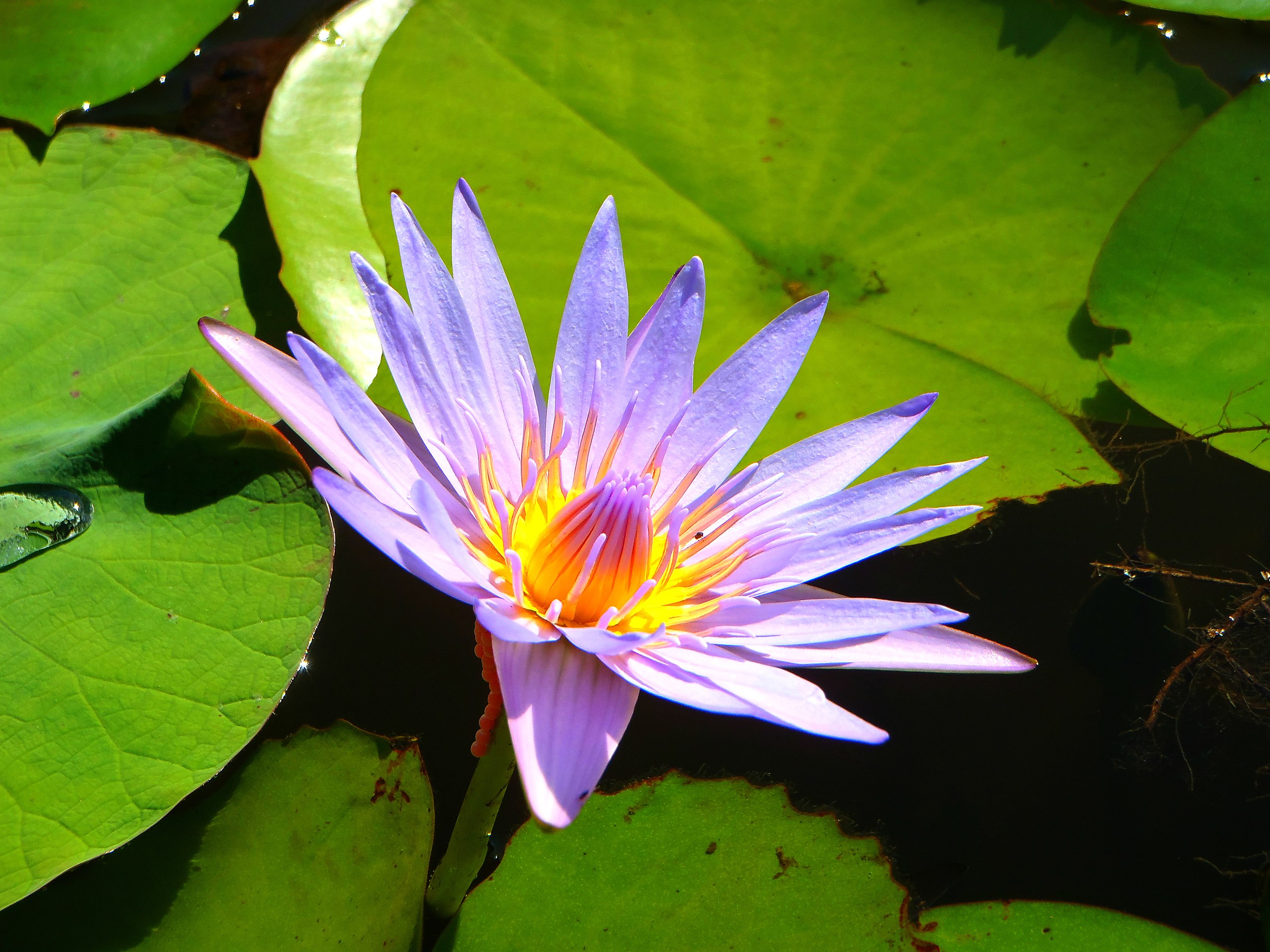
"Nymphaea caerula" by Palmbeaches974 is licensed under CC BY-SA 3.0
Where?
Water mint is a plant from the mint genus and is found in large parts of Europe and Africa. It grows mainly on somewhat acidic, muddy soils, on moderately nitrogen-rich sites, on banks and ditches, in wet and boggy meadows and swamp forests. It can also grow underwater in depths up to 2 meters.
Appearance?
Water mint grows as a perennial herbaceous plant that reaches heights of 10 to 150 cm. The four-edged stem grows opposite, ovate leaves with toothed margins that grow between 2 to 8 cm long and 1 to 4 cm wide. The flowers are close above the upper leaf axils and form spherical inflorescences. The flowers have a light purple, pink or white coloration and consist of five leaves each up to 4mm long.
Special Features?
Very typical for the water mint is the smell of mint, which occurs especially when rubbing the leaves.
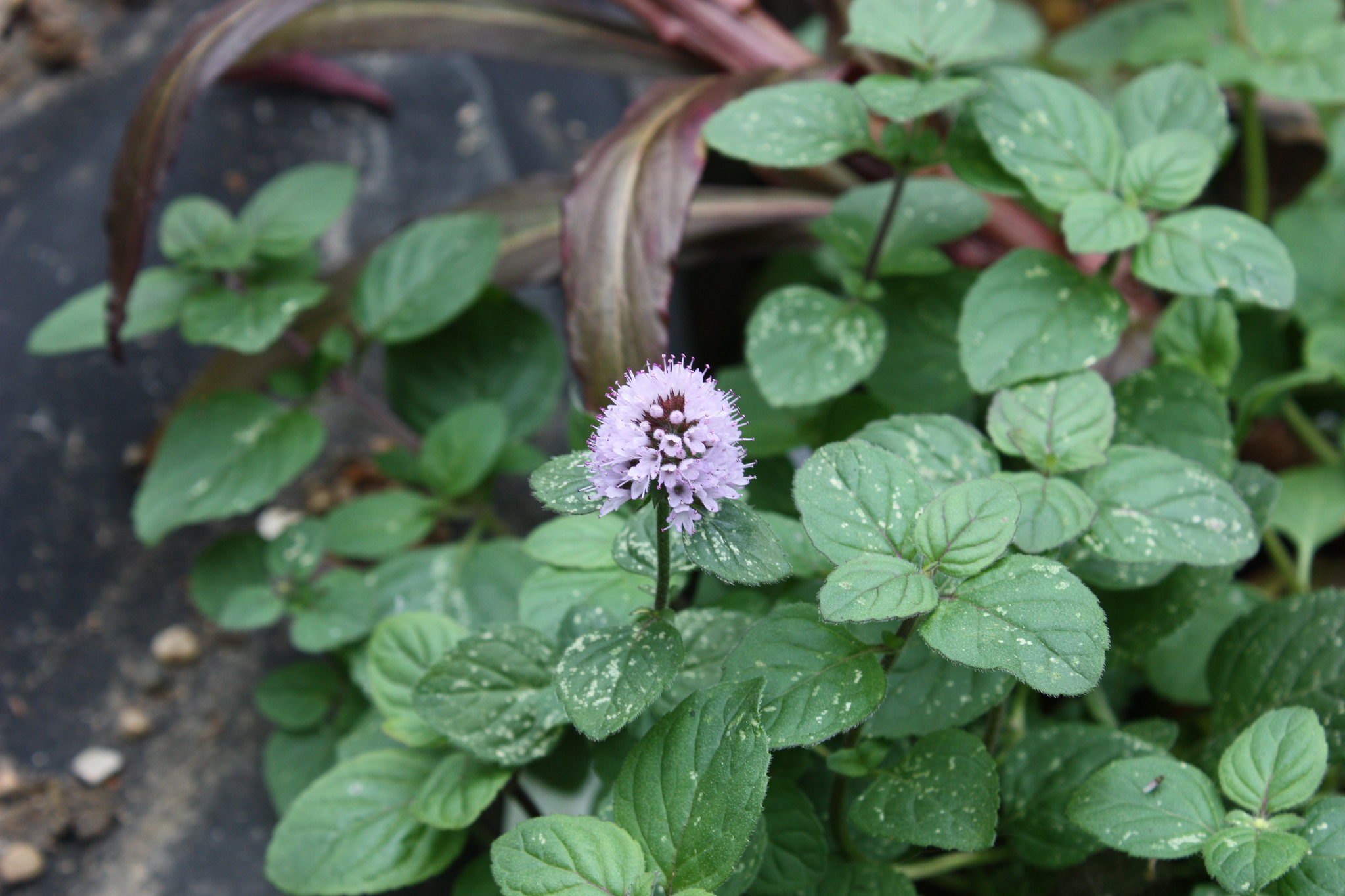
"Water Mint (Mentha aquatica)" by Edward Baker is licensed under CC BY-NC-SA 2.0

"Mentha aquatica" by Jörg Hempel is licensed under CC BY-SA 2.0
Where?
The Water silk is a grren algae, it grows best in nutrient-enriched (eutrophic), clear and calm waters. The green alga is found only in ecologically disturbed waters and indicates poor condition of the water body.
Appearance?
Filamentous, free floating, light green slimy patches.
Special Features?
With enough sunlight and warmth, small bubbles form and the algae rise to the water surface.
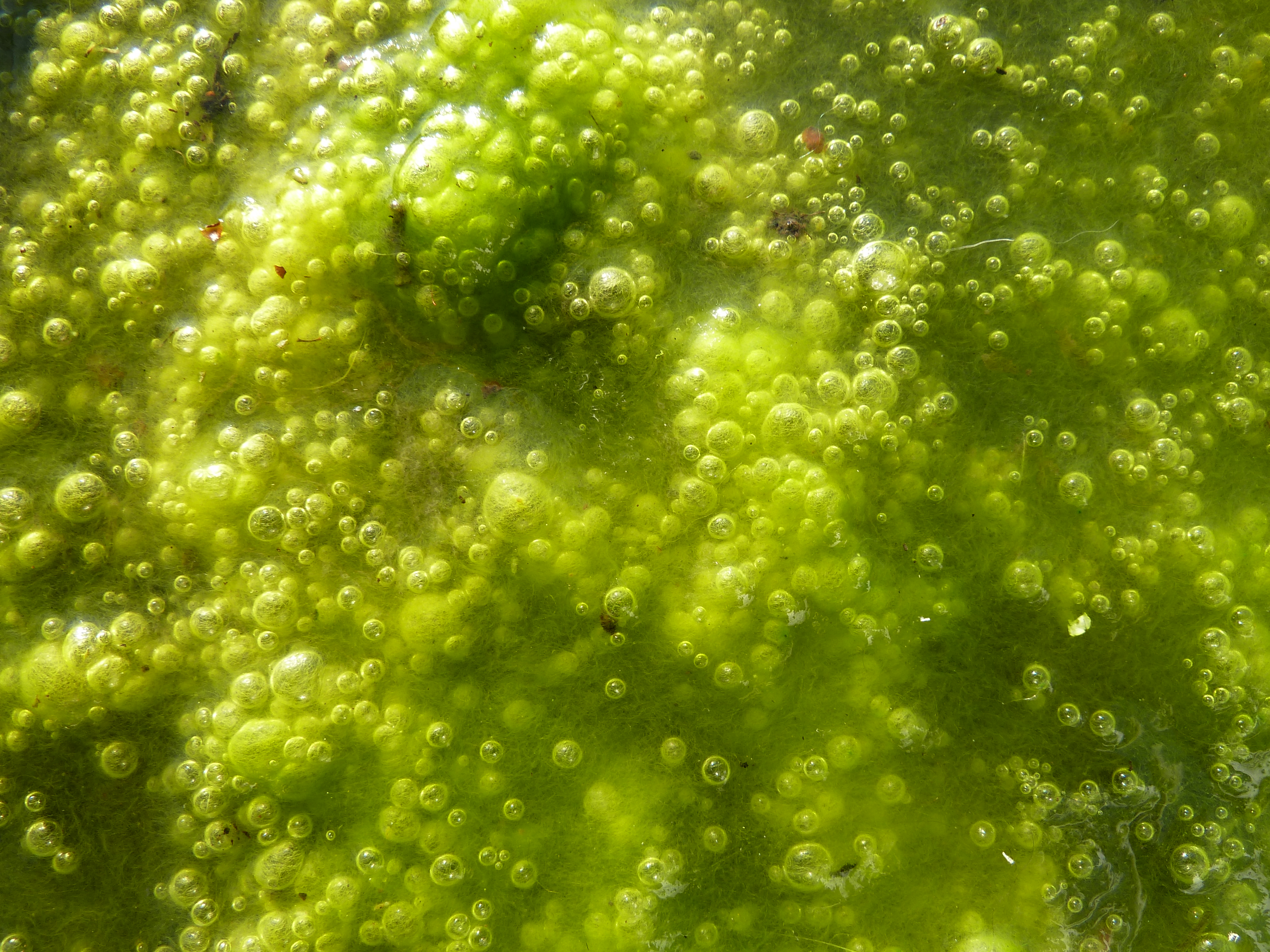
"SpirogyraIreland" by Notafly is licensed under CC BY-SA 4.0
Where?
The water-starwort (Callitriche) form a group of plants living in water. They are creeping annual to perennial herbaceous plants living on the bottom or partially or completely under the water surface. They belong to the natural vegetation of a river.
Appearance?
The shoot axis grows filiform and is covered with opposite leaves. The shape and arrangement of the leaves varies greatly depending on the location. Plants located below the water surface often have lanceolate or linear leaves and long internodes. An upper portion of the leaves and flowers often float in carpets on the water surface.
Special features?
There are several Callitriche species that are sensitive to overly nutrient-rich water (eutrophic). These include Callitriche cophocarpa, recognizable by its lance-shaped, longer leaves. Likewise, there are Callitriche species such as Callitriche obtusangula that are tolerant of water pollution and are considered indicators of eutrophic waters. Unlike Callitriche cophocarpa, Callitriche obtusangula has rounder leaves. However, beware that other Callitriche species also have rounded leaves. So if there are water-starwort swimming on your brook or river, look for other indicators and see if your water-starwort matches your observations.

Identifying characteristics: lanceolate, longer leaves. Callitriche cophocarpa is found in streams or rivers with little polluted or eutrophic water.
"File:Callitriche cophocarpa.jpg" by Jan Prančl is licensed under CC BY 3.0.

Identifying characteristic: round leaves of Callitriche obtusangula
Callitriche obtusangula Le Gall, 1852 by Tenesse85 is marked with Public Domain Mark 1.0.
Wood club-rush (Scripus)
is a genus of grass-like species in the sedge family.
Where?
Nutrient-rich, loamy-humic and slightly acidic substrate is ideal for most species. However, they are considered natural inhabitants of riverbanks or wetlands.
Appearance?
The species grow as perennial herbaceous plants, reaching growth heights of 30 to 200 cm, depending on the species. Some species form rhizomes (roots). The culms are solitary to many together. The culms are usually triangular and the leaves are grassy.
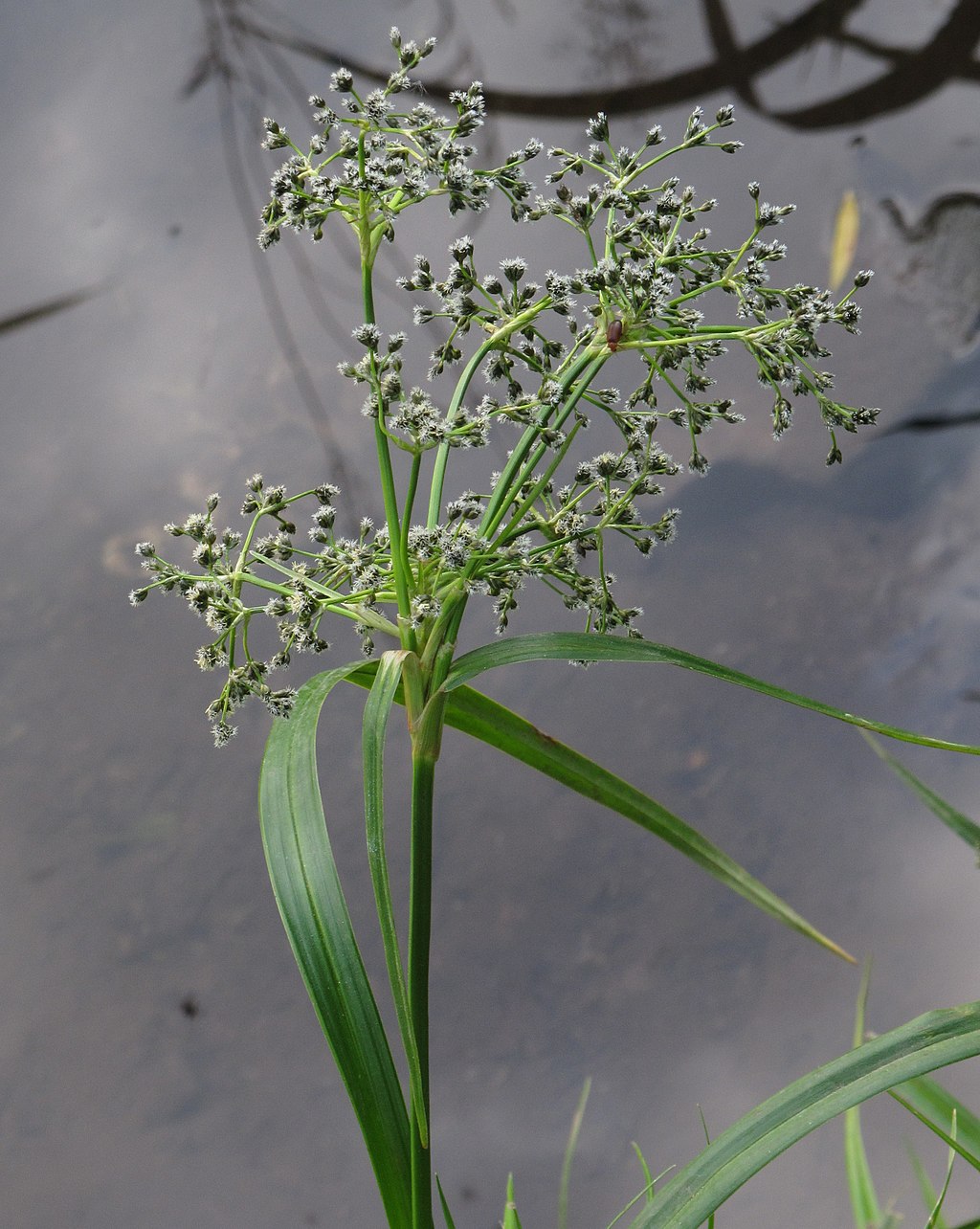
"Scirpus sylvaticus RF" by Robert Flogaus-Faust is licensed under CC BY 4.0.

Another species - Scirpus lacustris that also grows in water , its culms have "air tubes" through which it directs air into the roots growing underwater.
“Scirpus lacustris — Flora Batava — Volume v9.jpg” is licensed under Public domain
Where?
Prefer sunny to light-shaded places that are wet to moist. It grows especially well directly in the water at depths of maximum 40 centimeters of water on heavy clay soils.
Appearance?
Grows as a perennial herbaceous plant, which can reach growth heights of 1 to 2 m. The gray-green sword-shaped leaves grow up to 90 cm long and 1-3 cm wide. The inflorescence consists of a yellow trifoliate single flower, from which cylindrical fruits are formed, 4 to 8 cm long, containing many seeds. The flowering period lasts from the end of May to June.
Special Features?
This plant has been used as a form of water treatment since it can take up macronutrients (such as nitrogen and phosphorus) through its roots, and is featured in many AS Level Biology practicals as its ability to grow in low pH levels makes it a useful indicator.
All plant parts of the plant are poisonous. Partly it is used as an ornamental plant for garden ponds and water banks.

"Sumpf-Schwertlilie (Iris pseudacorus) (01)" by Rüdiger Stehn is licensed under CC BY-SA 2.0
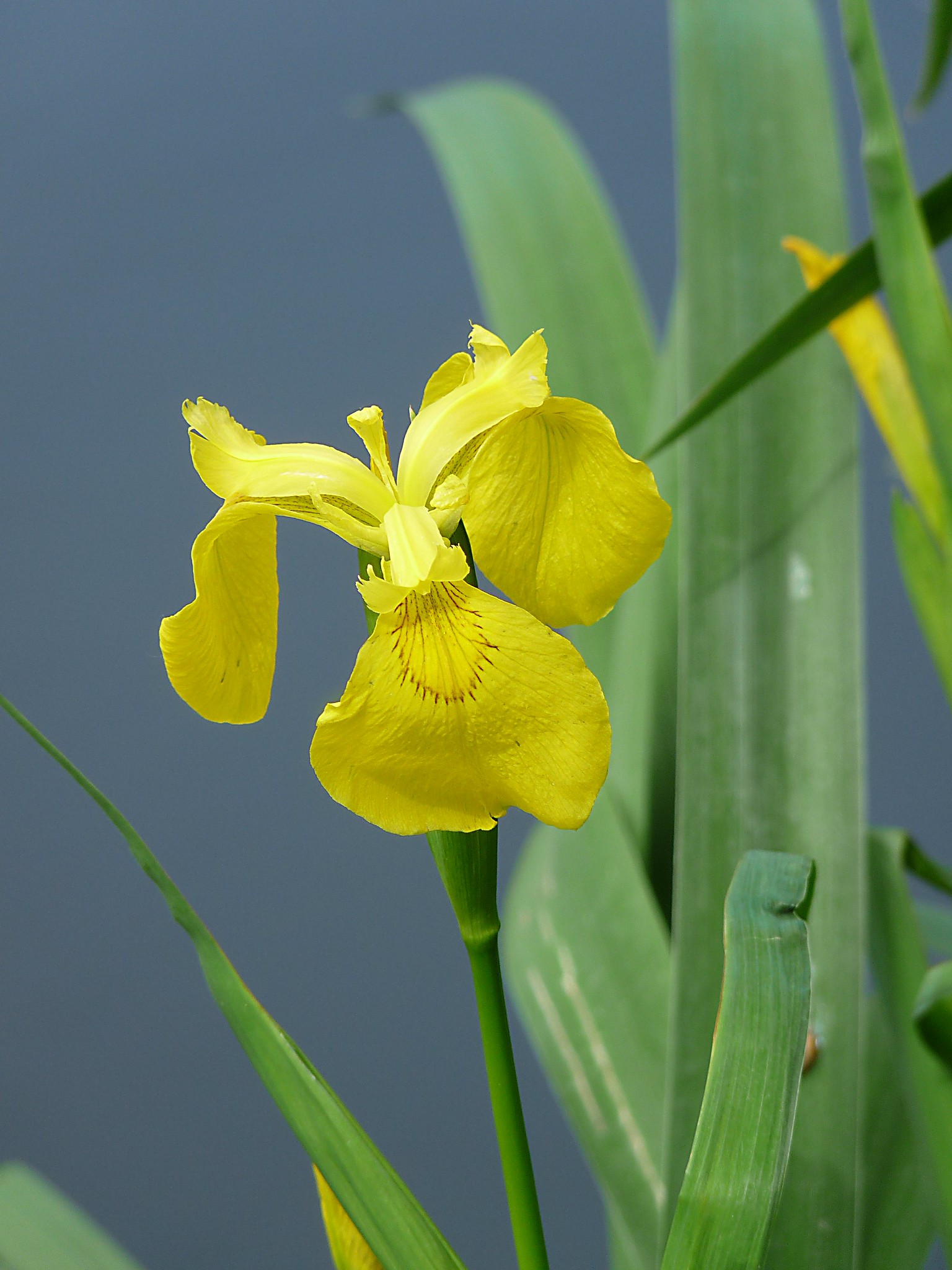
"Yellow Iris - Iris pseudacorus" by Hornbeam Arts is licensed under CC BY-NC 2.0
This website uses no external trackers, no analytics, just session cookies and values your online privacy.

